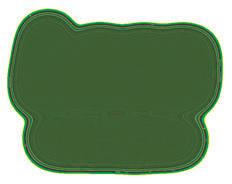Emerging Technologies: Artificial Intelligence in Engineering










































3,200/page RM 3,200/page
Full-Page, Full-Colour Advertisement
This one-time-only special rate o er is for new advertisers.
Space availability is subject to booking on a first-come-first-served basis.
Clients will provide ready-to-print artwork in PDF format with 300dpi.
Full page: 210mm x 285mm, 5mm extra bleed sizes for 4-sided with crop mark.
Advertising space must be utilised before 31 December 2023.
*Please note that the above rate will be subjected to 6% SST. For overseas advertisers, an additional 25% will be charged.
Rate shown above excludes 15% advertising agency commission.
Payment term: Full advance payment.
Artwork submission deadline is on (or before) the 1st week of the prior month of publication. After the material deadline, no cancellation or alteration to the advertisement will be entertained.
Any cancellation after signing the advertising order will result in a 50% penalty charge. The publisher reserves the right to edit, revise or reject any advertisement deemed unsuitable or inappropriate.
JURUTERA has an estimated readership of 200,000 professionals. Our esteemed readership consists of certi ed engineers, decision making corporate leaders, CEOs, government o cials, project directors, entrepreneurs, project consultants, engineering consulting rms and companies involved with engineering products and services. Circulation & Readership Pro le

MAJLIS BAGI SESI 2023/2024 (IEM COUNCIL SESSION 2023/2024)
YANG DIPERTUA / PRESIDENT
Ir. Prof. Dr Norlida bt Buniyamin
TIMBALAN YANG DIPERTUA / DEPUTY PRESIDENT
Ir. Prof. Dr Jeffrey Chiang Choong Luin
NAIB YANG DIPERTUA / VICE PRESIDENTS
Ir. Mohd Khir bin Muhammad, Ir. Prof. Dr Tan Chee Fai, Ir. Abdul Razak bin Yakob, Ir. Yau Chau Fong,
Ir. Dr Siti Hawa binti Hamzah, Ir. Fam Yew Hin, Ir. Chen Harn Shean
SETIAUSAHA KEHORMAT / HONORARY SECRETARY
Ir. Prof. Dr Zuhaina binti Zakaria
BENDAHARI KEHORMAT / HONORARY TREASURER
Ir. Assoc. Prof. Dr David Chuah Joon Huang
BEKAS YANG DIPERTUA TERAKHIR / IMMEDIATE PAST PRESIDENT
Ir. Ong Ching Loon
BEKAS YANG DIPERTUA / PAST PRESIDENTS
Y.Bhg. Academician Tan Sri Datuk Ir. (Dr) Ahmad Zaidee bin Laidin, Y.Bhg. Dato’ Paduka Ir. Hj. (Dr) Keizrul bin Abdullah, Y.Bhg. Academician Emeritus Tan Sri Dato’ Ir. Prof. Dr Chuah Hean Teik, Y.Bhg. Dato’ Ir. Lim Chow Hock, Ir. Dr Tan Yean Chin
WAKIL AWAM / CIVIL REPRESENTATIVE
Ir. Tu Yong Eng
WAKIL MEKANIKAL / MECHANICAL REPRESENTATIVE
Ir. Ng Yong Kong
WAKIL ELEKTRIK / ELECTRICAL REPRESENTATIVE
Ir. Mohd. Aman bin Hj. Idris
WAKIL STRUKTUR / STRUCTURAL REPRESENTATIVE
Ir. Dr Tan Kuang Leong
WAKIL KIMIA / CHEMICAL REPRESENTATIVE
Ir. Dr Chong Chien Hwa
WAKIL LAIN-LAIN DISPLIN / REPRESENTATIVE TO OTHER DISCIPLINES
Ir. Assoc. Prof. Dr Wong Yew Hoong
WAKIL MULTIMEDIA DAN ICT / ICT AND MULTIMEDIA REPRESENTATIVE
Ir. Assoc. Prof. Dr Lai Khin Wee
WAKIL JURUTERA WANITA / WOMEN ENGINEERS REPRESENTATIVE
Ir. Noorfaizah binti Hamzah
WAKIL BAHAGIAN JURUTERA SISWAZAH / YOUNG ENGINEERS SECTION REPRESENTATIVES
Mr. Muhammad Ashiq Marecan bin Hamid Marecan, Grad. IEM, Mr. Lim Yiren, Mr. Darshan a/l Balasubramaniam, Grad. IEM, Mr. Ooi Wei Chien, Grad. IEM, Ms. Ong Ye Shian, Grad. IEM
AHLI - AHLI MAJLIS / COUNCIL MEMBERS
Ir. Dr Vigna Kumaran a/l Ramachandaramurthy (casual vacancy for Ir. Dr Siti Hawa binti Hamzah for 1 session), Ir. Assoc. Prof. Dr Lee Tin Sin, Ir. Mah Way Sheng, Ir. Sreedaran Raman, Ir. Lee Cheng Pay, Ir. Dr Kannan a/l M. Munisamy, Ir. Dr Siow Chun Lim, Ir. Wong Chee Fui, Ir. Ts. Assoc. Prof. Dr Hum Yan Chai, Ir. Tiong Ngo Pu, Ir. Rusnida binti Talib, Ir. Prof. Dr Lau Hieng Ho, Ir. Muhammad Azmi bin Ayub, Ir. Arul Hisham bin Abdul Rahim (casual vacancy for Ir. Fam Yew Hin - for 2 sessions), Ir. Razmahwata bin Mohd Razalli, Ir. Simon Yeong Chin Chow, Ir. Dr Chan Seong Phun, Ir. Yam Teong Sian, Ir. Kwok Yew Hoe, Ir. Dr Lee Choo Yong, Ir. Sharifah Azlina binti Raja Kamal Pasmah, Ir. Ts. Dr Wan Syakirah binti Wan Abdullah, Ir. Dr Mui Kai Yin, Ir. Shamil bin Abu Hassan, Ir. Wan Rizaluddin Abdullah bin Wan Ali, Ir. Prof. Dr Lam Wei Haur (casual vacancy for Ir. Prof. Dr Zuhaina bt Zakaria for 3 sessions) AHLI - AHLI MAJLIS JEMPUTAN / COUNCIL MEMBERS BY INVITATION
Ir. Lai Sze Ching, Ir. Gopal Narian Kutty, Y.Bhg. Dato’ Prof. Ir. Dr Mohd Hamdi bin Abd Shukor PENGERUSI CAWANGAN / BRANCH CHAIRMAN
1. Pulau Pinang: Ir. Chan Wah Cheong
2. Selatan: Ir. Thayala Rajah s/o Selvaduray
3. Perak: Ir. Assoc. Prof. Dr Nursyarizal bin Mohd Nor 4. Pahang: Ir. Ab Rahman bin Hashim
5. Kedah-Perlis: Ir. Roshasmawi bin Abdul Wahab
6. Negeri Sembilan: Ir. Shahrin Amri bin Jahari
7. Kelantan: Ir. Abrizan bin Abdul Kadir
8. Terengganu: Ir. Mazlan bin Che Ku Ahmad
9. Melaka: Ir. Ong Yee Pinn
10. Sarawak: Ir. Sim Hui Kheng, Stephanie
11. Sabah: Ir. Chin Tet Fu, Willy
12. Miri: Ir. Chong Boon Hui
AHLI JAWATANKUASA INFORMASI DAN PENERBITAN/ STANDING COMMITTEE ON INFORMATION AND PUBLICATIONS 2023/2024
Pengerusi/Chairman: Ir. Abdul Razak bin Yakob Naib Pengerusi/Vice Chairman: Ir. Dr Siow Chun Lim Setiausaha/Secretary: Ir. Ts. Assoc. Prof. Dr Hum Yan Chai Ketua Pengarang/Chief Editor: Ir. Abdul Razak bin Yakob Pengarang Prinsipal Buletin/ Principal Bulletin Editor: Ir. Razmahwata bin Mohamad Razalli Pengarang Prinsipal Jurnal/Principal Journal Editor: Ir. Ts. Assoc. Prof. Dr Teo Fang Yenn Pengerusi Aplikasi Mudah Alih IEMGo/IEMGo Mobile Application Chairman: Ir. Dr Bhuvendhraa Rudrusamy Pengerusi Penglibatan Ahli/Members Engagement Chairperson: Ir. Rusnida binti Talib Pengerusi Pusat Sumber/Resource Centre Chairman: Ir. Dr Kannan a/l M. Munisamy
Ahli-Ahli/Committee Members: Ir. Ong Guan Hock, Ir. Lee Chang Quan, Ir. Lau Tai Onn, Ir. Dr Oh Seong Por, Ir. Yee Thien Seng, Ir. Dr Lee Choo Yong, Ir. Ts. Dr Tan Kim Seah, Ir. Assoc. Prof. Dr Lee Tin Sin, Dr Sudharshan N. Raman, Grad. IEM, Ms. Michelle Lau Chui Chui, Grad. IEM, Ir. Tu Yong Eng, Dr Nor Ilia Anisa Aris, Grad. IEM, Mr. Muhd Ashiq Marecan bin Hamid Marecan, Grad. IEM, Mr. Chuah Pei Lim, Grad. IEM
LEMBAGA PENGARANG/EDITORIAL BOARD 2023/2024
Ketua Pengarang/Chief Editor: Ir. Abdul Razak bin Yakob Pengarang Prinsipal Buletin/ Principal Bulletin Editor: Ir. Razmahwata bin Mohamad Razalli Ahli-ahli/Committee Members: Ir. Dr Siow Chun Lim, Ir. Lau Tai Onn, Ir. Ong Guan Hock, Ir. Yee Thien Seng, Ir. Dr Oh Seong Por, Ir. Ts. Assoc. Prof. Dr Teo Fang Yenn, Dr Sudharshan N. Raman, Ir. Tu Yong Eng, Ir. Lee Chang Quan,Ir. Dr Lee Choo Yong, Ir. Ts. Dr Tan Kim Seah, Ms. Michelle Lau Chui Chui, Grad. IEM
Secretariat: Janet Lim, Nurul Aida binti Mustafa, Nur Illyarnie binti Rosman
THE INSTITUTION OF ENGINEERS, MALAYSIA Bangunan Ingenieur, Lots 60 & 62, Jalan 52/4, P.O. Box 223, (Jalan Sultan), 46720 Petaling Jaya, Selangor Darul Ehsan. Tel: 603-7968 4001/4002 Fax: 603-7957 7678 E-mail: sec@iem.org.my Homepage: http://www.myiem.org.my
Harnessing the Potential: Applications of Artificial Intelligence, Machine Learning and Deep Learning in Electrical Engineering
Transforming Industries:
AI Innovations in 6G Communication, Automotive Industry, Empowering SMEs, Indoor Navigation & Healthcare Solutions
Technical Visit to MRANTI Makers Lab
Technical Visit to IIUM Centre of Unmanned Technologies, International Islamic University Malaysia Introduction to Lean Manufacturing
IEM Sabah 45th Annual Dinner 2023
Tower of Teluk Intan






DIMENSION PUBLISHING SDN. BHD. [ 199701034233 (449732-T) ]
Level 18-01, PJX-HM Shah Tower, No. 16A, Persiaran Barat, 46050 Petaling Jaya, Selangor Darul Ehsan, Malaysia.
Tel: +(603) 7493 1049 Fax: +(603) 7493 1047
E-mail: info@dimensionpublishing.com
Website: www.dimensionpublishing.com
CHAIRMAN
ROBERT MEBRUER
CEO/PUBLISHER
PATRICK LEUNG
GENERAL MANAGER
SHIRLEY THAM ● shirley@dimensionpublishing.com
HEAD OF MARKETING & BUSINESS DEVELOPMENT
JOSEPH HOW ● joseph@dimensionpublishing.com
PRODUCTION EDITOR
TAN BEE HONG ● bee@dimensionpublishing.com
CONTRIBUTING WRITERS
PUTRI ZANINA ● putri@dimensionpublishing.com
HANNA SHEIKH MOKHTAR ● hanna@dimensionpublishing.com
SENIOR GRAPHIC DESIGNER
SOFIA HANIS ● sofia@dimensionpublishing.com
GRAPHIC DESIGNER
NICOLE THENG ● nicole@dimensionpublishing.com
ADVERTISING CONSULTANTS
THAM CHOON KIT ● ckit@dimensionpublishing.com
ACCOUNTS CUM ADMIN EXECUTIVE
YEN YIN ● yenyin@dimensionpublishing.com
For advertisement placements and subscriptions, please contact: DIMENSION PUBLISHING SDN. BHD. [ 199701034233 (449732-T) ]
Level 18-01, PJX-HM Shah Tower, No.16A, Persiaran Barat, 46050 Petaling Jaya, Selangor Darul Ehsan, Malaysia.
Tel: +(603) 7493 1049 Fax: +(603) 7493 1047 E-mail: info@dimensionpublishing.com
Subscription Department E-mail: info@dimensionpublishing.com
JURUTERA is published and printed monthly by Dimension Publishing Sdn. Bhd.
JURUTERA MONTHLY CIRCULATION: OVER 50,000 MEMBERS
Submission or placement of articles in JURUTERA could be made to the:Chief Editor
THE INSTITUTION OF ENGINEERS , MALAYSIA (IEM) Bangunan Ingenieur, Lots 60 & 62, Jalan 52/4, P.O. Box 223 (Jalan Sultan), 46720 Petaling Jaya, Selangor. Tel: +(603) 7968 4001/4002 Fax: +(603) 7957 7678 E-mail: pub@iem.org.my or sec@iem.org.my IEM Website: http://www.myiem.org.my
© 2023, The Institution of Engineers, Malaysia (IEM) and Dimension Publishing Sdn. Bhd.
PUBLICATION DISCLAIMER
The publication has been compiled by both IEM and Dimension with great care and they disclaim any duty to investigate any products, process, services, designs and the like which may be described in this publication. The appearance of any information in this publication does not necessarily constitute endorsement by IEM and Dimension. There is no guarantee that the information in this publication is free from errors. IEM and Dimension do not necessarily agree with the statement or the opinion expresssed in this publication.
COPYRIGHT
JURUTERA Bulletin of IEM is the official magazine of The Institution of Engineers, Malaysia (IEM) and is published by Dimension Publishing Sdn. Bhd. The Institution and the Publisher retain the copyright over all materials published in the magazine. No part of this magazine may be reproduced and transmitted in any form or stored in any retrieval system of any nature without the prior written permission of IEM and the Publisher.
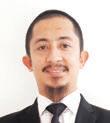
by Ir. Amir Hussein bin Jaafar Chairman, Information Communication Technology Special Interest Group
Information Communication Technology Special Interest Group (ICTSIG) is delighted to present the August issue of JURUTERA magazine, dedicated to the fascinating domain of Artificial Intelligence (AI) in engineering. In this edition, we explore the deep impact AI has had on the professional engineering landscape in Malaysia as well as its implications in the future.
Over the past few years, AI has emerged as a powerful ally for engineers, revolutionising the way they approach complex challenges and transforming traditional methodologies. In Malaysia, this technology has gained remarkable traction, redefining the boundaries of what engineers can accomplish, from intelligent systems that optimise energy consumption in buildings to AI-driven simulations for designing robust infrastructure.
We will showcase the remarkable applications of AI in various engineering disciplines, offering insights into its influence in the field. We bring you exclusive interviews with leading experts who have embraced AI as an integral part of their work, sharing their experiences and perspectives on how this technology is shaping the future of engineering in our country.
As you immerse yourself in the pages of this magazine, we invite you to envision a future where AI and engineering will intertwine seamlessly, propelling our engineering community to new heights of innovation and excellence. We hope this issue will spark inspiration and incite meaningful conversations among our readers.
Embrace the era of AI in engineering with us, as we embark on a captivating journey through its impact and prospects in Malaysia.
by Ir. Razmahwata Mohamad Razalli Principal Bulletin Editor
Firstly, I would like to wish our readers a Happy 66th Malaysia Independence Day 2023.
Mr. Loo Weng Soon joined IEM in 1997 as Assistant Library Executive and rose up the ranks through his involvement in the various departments. Today, he heads the IT Department with four staff members, was instrumental in IEM’s smooth transition to webinars and virtual meetings when MCO was first implemented during the Covid-19 pandemic.


Ms. Valli Saminanthan joined IEM in 2016. In 2018, she was transferred to assist the International Office (IO) and was groomed to take over its management. Today she is the IO Manager responsible for IEM’s international affiliations with ASEAN Federation of Engineering Organisations (AFEO), ASEAN Engineering Register (AER), International Engineering Alliance (IEA), Federation of Engineering Institutions of Asia and the Pacific (FEIAP) and World Federation of Engineering Organisations (WFEO).



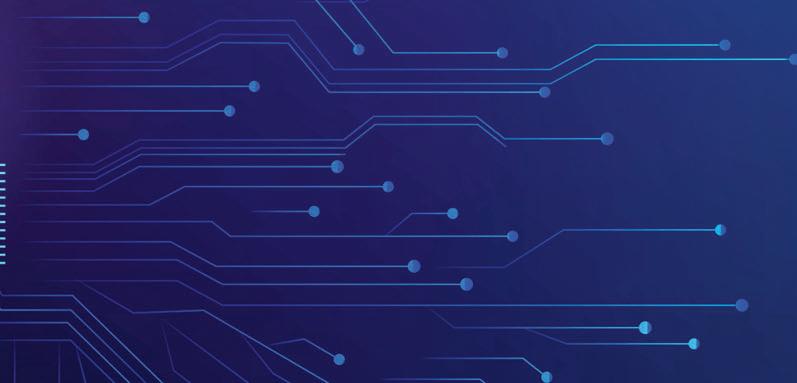




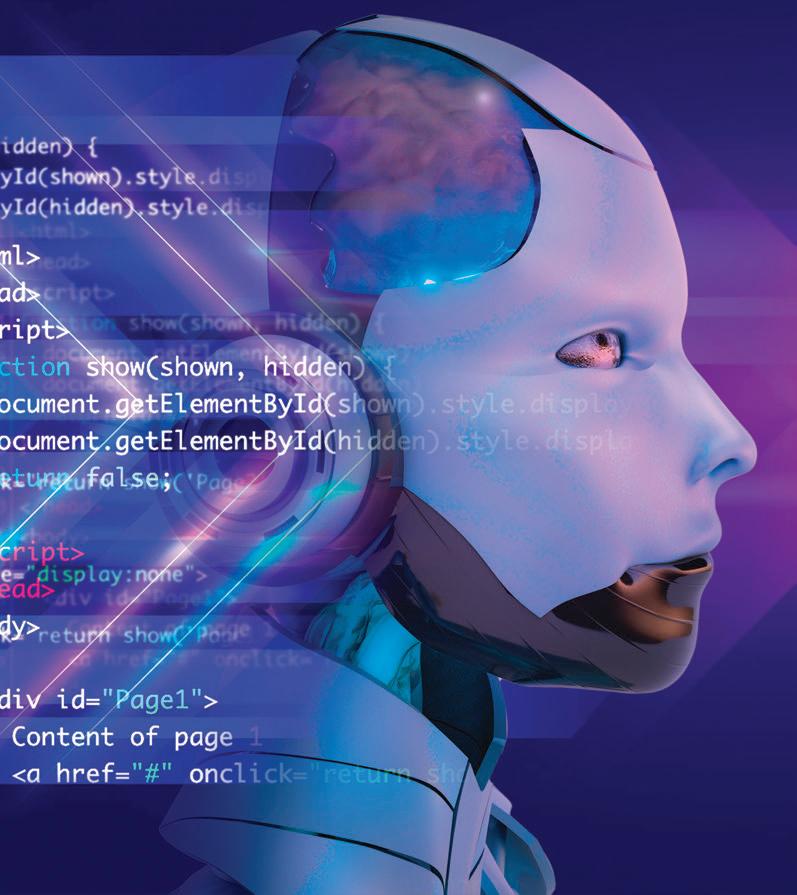
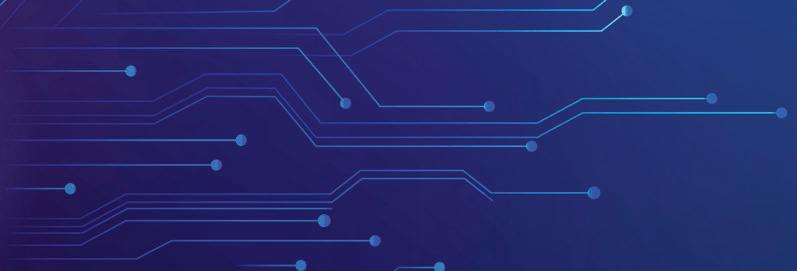

Ir. Prof. Dr Harikrishnan Ramiah is with the Department of Electrical Engineering, Universiti Malaya (UM), working in RFIC/RFEH design. He also serves as a Director of the Centre of Industry Research 4.0 (CRI4.0) and Head of Analog, Digital & RF Research group at UM. He is a Fellow Member of The Institution of Engineers, Malaysia, a Chartered Engineer, a Fellow member of Institute of Electrical Technology (FIET), a Senior Member of the Institute of Electrical & Electronics Engineer (SMIEEE) and a member of The Institute of Electronics, Information & Communication Engineers (IEICE).
Ir. Prof. Dr Harikrishnan, as a Director of CRI4.0, tell us about your vision on the AI agenda
My vision is for CRI4.0 to serve as UM’s strategic move in responding to the government’s initiative in preparing the nation to face the global tsunami brought on by the 4th Industrial Revolution (4IR). In line with the aim to be the authoritative voice in the field of Industry 4.0 and to elevate the R&D activities of Industry 4.0 in Malaysia, CRI4.0 is committed to working closely with various companies to develop a substantial platform by connecting academia and industries through industrial projects.
Our vision is not only to provide leadership for industries to adopt the implementation of 4IR technologies but also to develop talent and expertise to support 4IR initiatives along with advising the relevant government agencies or organisations.
I hope CRI4.0 will continue to establish collaborative networks with other institutions or organisations to facilitate technology adoptions in the country and to gather experts in 4IRrelated fields by undertaking related projects and activities. In addition, we will also assist various small & medium enterprises (SMEs) for the implementation of 4IR.
What is your take on AI?
AI refers to the development and deployment of computer systems which can perform tasks that typically require human intelligence. AI technologies encompass various techniques, including machine learning, natural language processing, computer vision and robotics. These systems can process
and analyse vast amounts of data, learn from patterns and experiences as well as make informed decisions or predictions. In engineering, AI is transforming traditional practices, optimising designs, automating tasks and enhancing decision-making processes.
AI also plays a significant role in automation. It can automate repetitive and mundane tasks, freeing up engineers’ time to allow them to focus on more complex and creative aspects of their work. For example, AI can automate quality control processes, perform data analysis for fault detection and optimise maintenance schedules.
Moreover, AI technologies contribute to enhancing safety and sustainability in engineering. AIpowered systems can monitor and analyse data in real-time to detect anomalies or potential risks. This proactive approach improves safety measures and reduces the likelihood of accidents. Additionally, AI can optimise energy consumption, reduce waste and promote sustainable practices in engineering projects.
Is there any government intervention in advancing AI technology in engineering?
Role of MOSTI, MIDA, MITI, MCMC:
The Ministry of Science, Technology & Innovation (MOSTI), the Ministry of International Trade & Industry (MITI), Malaysian Investment Development Authority (MIDA) and the Malaysian Communications & Multimedia Commission (MCMC) play crucial roles in advancing AI technology in engineering.
In response to the National 4IR Policy, the government launched
the Industry4WRD in July 2021 to drive digital transformation of the manufacturing and related services sectors in Malaysia. These government bodies provide strategic guidance, policies and regulations to foster AI adoption and innovation. They collaborate with industry stakeholders, research institutions and academia to promote research and development in AI and to facilitate the integration of AI into engineering practices.
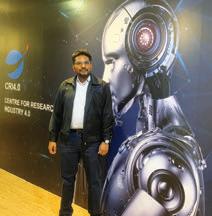
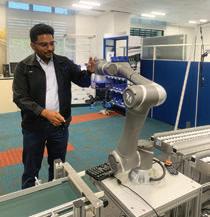




Grants and funds: Government grants and funds are instrumental in supporting AI research and development in engineering. These initiatives aim to foster collaboration between industry and academia, stimulate innovation and provide financial resources for projects that leverage AI to address engineering challenges.
For instance, MIDA has provided funding for a research project in collaboration with LSF Technology, a local small and medium-sized enterprise located in Kajang. In this collaboration, the project will apply AI techniques to optimise the manufacturing processes and improve productivity.
The funding support from MIDA enables the research team from CRI4.0 to work closely with LSF Technology, leveraging their expertise in engineering and AI to develop innovative solutions that will benefit the industry. The funding also enables the CRI4.0 research team to access the necessary resources, such as computing infrastructure, research equipment and expert guidance to successfully develop and implement AI-based solutions.
This collaboration not only benefits the industry partner by improving their processes and productivity but also contributes to the advancement
of AI in engineering. The research outcomes and insights gained from these projects can be shared with the broader engineering community, fostering knowledge transfer and driving further innovation.
Research & Development: Research & Development is a priority for the government in advancing AI technology in engineering. Funding and support are allocated to research institutions and universities to conduct cutting-edge research, develop AI-based solutions and explore new applications in engineering.
Role of AI in Engineering
Economy benefits: AI offers significant economic benefits in engineering. By optimising designs, reducing waste and improving efficiency, AI contributes to cost savings and productivity enhancement. It enables engineers to make data-driven decisions, leading to better outcomes and the improved performance of engineered systems.
AI algorithms can analyse vast amounts of data, including historical designs, simulations and performance data. By processing this data, AI can identify patterns, correlations and optimal design parameters that human engineers may overlook. This leads to improved designs that are
more efficient, cost-effective and which perform better in real-world conditions. Design optimisation will reduce material and resource waste, resulting in significant cost savings.
Energy consumption: AI also plays an important role in managing energy consumption in engineering. Through AI-powered algorithms, energy systems can be optimised, leading to reduced energy waste and increased sustainability. AI enables the prediction and management of energy demands, allowing for more efficient utilisation of resources. AI enables engineers to implement predictive maintenance strategies which can significantly reduce downtime and maintenance costs.
By analysing real-time sensor data and historical maintenance records, AI algorithms can predict equipment failures and schedule maintenance proactively. This approach minimises unplanned downtime, optimises maintenance schedules and reduces costs associated with reactive repairs.
Aligning with Sustainable Development Goals (SDGs): AI plays a crucial role in driving innovation, enhancing efficiency and promoting sustainable practices in engineering, aligning with SDG 9: Industry, Innovation & Infrastructure. By automating processes, optimising designs and improving overall operations, AI fosters technological advancements and streamlines industrial practices. It enables engineers to explore new possibilities, develop innovative solutions and improve existing systems, leading to sustainable growth in various industries. Furthermore, the ability of AI to analyse data and optimise infrastructure planning contributes to the development of resilient and sustainable infrastructure. By leveraging AI technologies, industries can achieve higher efficiency, reduce waste and streamline operations, thus promoting sustainable industrial practices and infrastructure development.
New skills set resources: The integration of AI in engineering
necessitates the development of new skill sets. Engineers need to acquire knowledge in AI technologies, data analytics and algorithm development to effectively utilise AI tools. Resources such as training programmes, online courses and educational institutions can provide the necessary training and upskilling opportunities.
Role of CRI4.0 in Championing AI for Engineering Community
Example of industry collaboration in AI and Engineering: CRI4.0 plays a pivotal role in championing AI for the engineering community through its active promotion of industry collaboration. By closely engaging with industry partners, CRI4.0 identifies specific challenges and opportunities where AI can be effectively applied to enhance engineering practices. This collaborative approach allows for a deeper understanding of industry needs and enables the development of tailored AI solutions.
One notable example of industry collaboration is the partnership between UM CRI4.0 and AMS Osram. They embarked on a joint research project aimed at developing AIdriven asset management systems for the manufacturing facilities of AMS Osram. By leveraging AI technologies,
CRI4.0 worked alongside the industry partner to analyse data, identify patterns and develop predictive models that optimise asset management processes.
Engineering education in enabling AI: CRI4.0 recognises the significance of engineering education in enabling the adoption of AI. As part of its efforts, CRI4.0 actively collaborates with academic institutions to incorporate AI into the engineering curriculum. This collaboration ensures that students will receive a well-rounded education that helps them to understand and apply AI technologies in their careers in the future.
CRI4.0 works closely with academic partners to develop AIfocused courses that cover essential topics such as machine learning, data analytics and AI applications in engineering. These courses provide students with a solid foundation in AI concepts, algorithms and tools, enabling them to comprehend the potential of AI in solving complex engineering problems. By integrating AI into the curriculum, CRI4.0 ensures that engineering students are equipped with the necessary knowledge and skills to harness the power of AI in their professional endeavours.

Additionally, CRI4.0 provides training resources and support for both educators and students. This includes access to AI development platforms, online resources and practical training materials. By offering these resources, CRI4.0 facilitates hands-on learning experiences and encourages students to explore AI applications in engineering. The research centre also engages Master’s and PhD students who actively contribute to AI-related projects, further enhancing their expertise in the field.
By emphasising AI education in engineering, CRI4.0 aims to produce a new generation of engineers who are well-versed in AI technologies that can effectively leverage them in their careers. This not only strengthens the capabilities of engineering graduates but also promotes interdisciplinary learning and collaboration between AI and engineering disciplines. By integrating AI into the curriculum and providing training resources, CRI4.0 plays a crucial role in preparing students for the AI-driven future of engineering.
Public Training: CRI4.0 recognises the importance of public training in AI. We conduct workshops, seminars and training programmes which are open to the public. These initiatives aim to raise awareness about AI applications in engineering, provide hands-on experience with AI tools and techniques and foster a culture of continuous learning and upskilling.
AI presents immense potential benefits for the country in the field of engineering, contributing to its economic growth and competitiveness. By integrating AI into engineering practices, Malaysia can drive innovation and enhance productivity in various industries. AI-powered optimisation of designs and processes leads to more efficient and cost-effective solutions, giving Malaysian businesses a competitive edge in the global market.
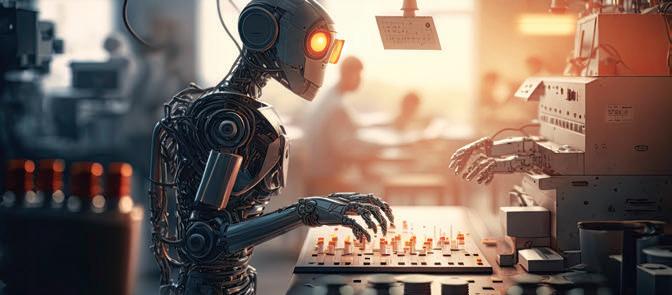
Furthermore, the application of AI in engineering can help create sustainable infrastructure, aligning with our goals for sustainable development and environmental conservation. This positions Malaysia as a forward-thinking nation that embraces technological advancements to address societal and environmental challenges.
However, along with the potential benefits, there are several challenges that we need to address to fully leverage the power of AI in engineering. One key challenge is the need for a skilled workforce proficient in AI technologies and engineering practices.
To do this, we need training and research programmes that focus on developing AI expertise within the engineering community. This includes promoting interdisciplinary collaboration between engineering and AI disciplines, encouraging the pursuit of advanced degrees in AI-related fields and fostering partnerships between academia and industry for knowledge exchange and practical training.
Another challenge lies in addressing concerns related to data privacy, security and ethical considerations. As AI relies heavily on data, ensuring the privacy and security of sensitive information becomes
crucial. Robust data protection measures and ethical guidelines need to be in place to address these concerns. The government, industry and regulatory bodies should work together to establish frameworks and regulations that govern the ethical use of AI in engineering, fostering trust and confidence in the technology.
The employability prospects for AI engineers in Malaysia are indeed promising, due to the widespread adoption of AI technologies across various industries. As AI continues to transform traditional practices and drive innovation, there is an increasing demand for professionals who possess expertise in AI and engineering. AI engineers are equipped with the skills to develop and implement AI models, design intelligent systems and analyse complex datasets, making them valuable assets to organisations seeking to leverage AI in their operations.
Industries such as manufacturing, energy, transportation and infrastructure development are actively embracing AI to enhance productivity, efficiency and decisionmaking processes. AI engineers play a vital role in developing AI-driven
solutions tailored to the specific needs of these sectors. For example, in manufacturing, AI engineers can optimise production processes, predict equipment failures and automate quality control systems.
Furthermore, the continuous advancements in AI present opportunities for AI engineers to become entrepreneurs and to contribute to Malaysia’s growing AI ecosystem. With their expertise, AI engineers can establish startups and develop innovative AI solutions to address industry-specific challenges. This entrepreneurial spirit not only fosters economic growth but also promotes Malaysia as a hub for AIdriven innovations.
My advice to engineers is to embrace life-long learning. The field of AI is evolving rapidly and engineers need to stay updated with the latest advancements, tools and techniques. Seek opportunities to gain practical experience in AI projects, collaborate with multidisciplinary teams and expand your knowledge through continuous education. Developing a solid foundation in engineering fundamentals while acquiring skills in AI technologies will provide you with a competitive edge in this exciting and transformative field.

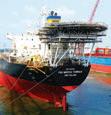
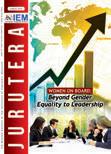

















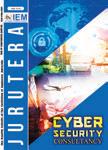















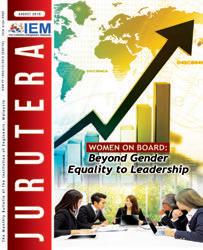






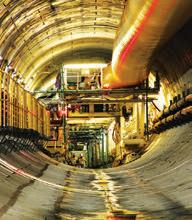
























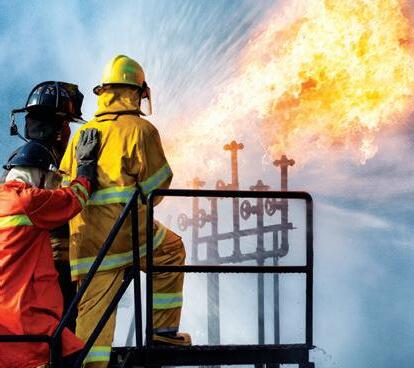















































Written and Prepared by:

Ir. Tejinder Singh
A certified National EnMS Expert, Registered Electrical Energy Manager and Certified Information Systems Security Professional.
In today’s ever-evolving technological landscape, Artificial Intelligence (AI) has emerged as a transformative force with profound implications for various industries. One field that has witnessed remarkable advancements fuelled by AI is electrical engineering. Driven by powerful subsets such as Machine Learning (ML) and Deep Learning (DL), AI has revolutionised traditional approaches and opened up new horizons for innovation.
In this article, we will explore the boundless applications of AI in electrical engineering, starting with an overview of AI, followed by a deeper dive into the concepts of ML and DL. Together, these cutting-edge technologies are empowering engineers to tackle complex challenges, optimise systems and unlock unprecedented possibilities.
At its core, AI refers to the development of computer systems capable of performing tasks which typically require human intelligence. These tasks range from simple rulebased operations to complex decision-making processes. AI systems aim to simulate human-like cognition, enabling machines to perceive, reason, learn and make informed decisions. Through the amalgamation of data, algorithms and computing power, AI systems analyse vast amounts of information, extract patterns and generate insights that drive intelligent actions. In the realm of electrical engineering, AI serves as a catalyst for transforming traditional practices, enhancing efficiency, accuracy, and innovation across multiple domains.
ML, a subset of AI, empowers computer systems to learn from data without being explicitly programmed. By leveraging algorithms and statistical models, ML algorithms autonomously identify patterns, correlations and trends in complex datasets, enabling predictions, classifications and intelligent decision-making. In electrical engineering, ML algorithms have found immense applications in optimising power systems, signal processing, fault diagnosis, and more. By harnessing historical data and real-time inputs, ML algorithms can generate insights that assist in power resource allocation, load forecasting, adaptive filtering and a multitude of other tasks, revolutionising the efficiency and reliability of electrical systems. ML algorithms can be further classified into supervised learning and unsupervised learning.
In the context of electrical engineering, ML has found compelling applications across various domains. For instance, in power systems, ML algorithms can be employed to predict electricity demand, optimise energy generation and improve the efficiency of power grids. ML techniques are also invaluable in fault diagnosis, allowing engineers to detect anomalies, identify potential failures and mitigate risks in electrical networks. Moreover, ML-based algorithms can aid in optimising the routing of power transmission lines, reducing losses and enhancing reliability. Examples of ML algorithms include the following:
• Linear Regression: A supervised learning algorithm used for regression tasks, where the goal is to predict a continuous numeric value based on input features.
It fits a linear relationship between the input features and the target variable.
• Logistic Regression: Another supervised learning algorithm used for binary classification tasks. It models the relationship between input features and the probability of belonging to a specific class using a logistic function.
• Decision Trees: A versatile supervised learning algorithm that builds a tree-like model to make predictions. It splits the data based on different features at each node and assigns a class or value to the leaf nodes.
• Random Forest: An ensemble learning method that combines multiple decision trees to make predictions. It generates a collection of decision trees and aggregates their predictions to obtain a final result.
• Support Vector Machines (SVM): A supervised learning algorithm used for both classification and regression tasks. It finds an optimal hyperplane that maximally separates the data points of different classes or fits a curve to approximate the data in regression problems.
• Naive Bayes: A probabilistic algorithm commonly used for text classification tasks. It assumes independence between the features and calculates the probability of a sample belonging to a class based on Bayes’ theorem.
• K-Nearest Neighbours (KNN): A simple but effective algorithm for both classification and regression tasks. It classifies a sample by assigning the most frequent class among its K-nearest neighbours or predicts a value based on the average of the values of its K-nearest neighbours.
• Neural Networks: A class of algorithms inspired by the structure of the human brain. Neural networks consist of interconnected nodes called neurons, organised in layers. They are capable of learning complex patterns and relationships from data and are used for various tasks, including image recognition and natural language processing.
• K-Means Clustering: An unsupervised learning algorithm used for clustering tasks. It groups data points into K clusters based on their similarity, aiming to minimise the intra-cluster distance and maximise the inter-cluster distance.
• Principal Component Analysis (PCA): A dimensionality reduction technique that transforms high-dimensional data into a lower-dimensional space. It identifies the principal components, which capture the most significant variance in the data.
DL, a subset of ML, derives inspiration from the structure and function of neural networks in the human brain. Through the deployment of artificial neural networks comprising multiple layers of interconnected



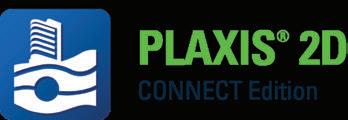

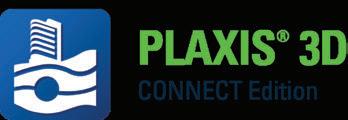
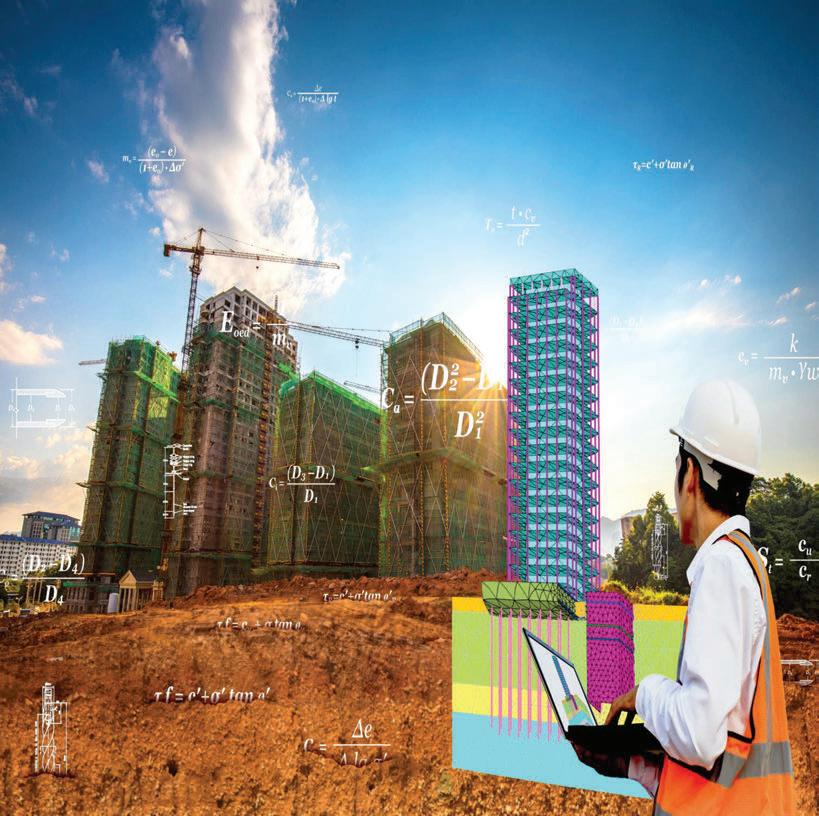
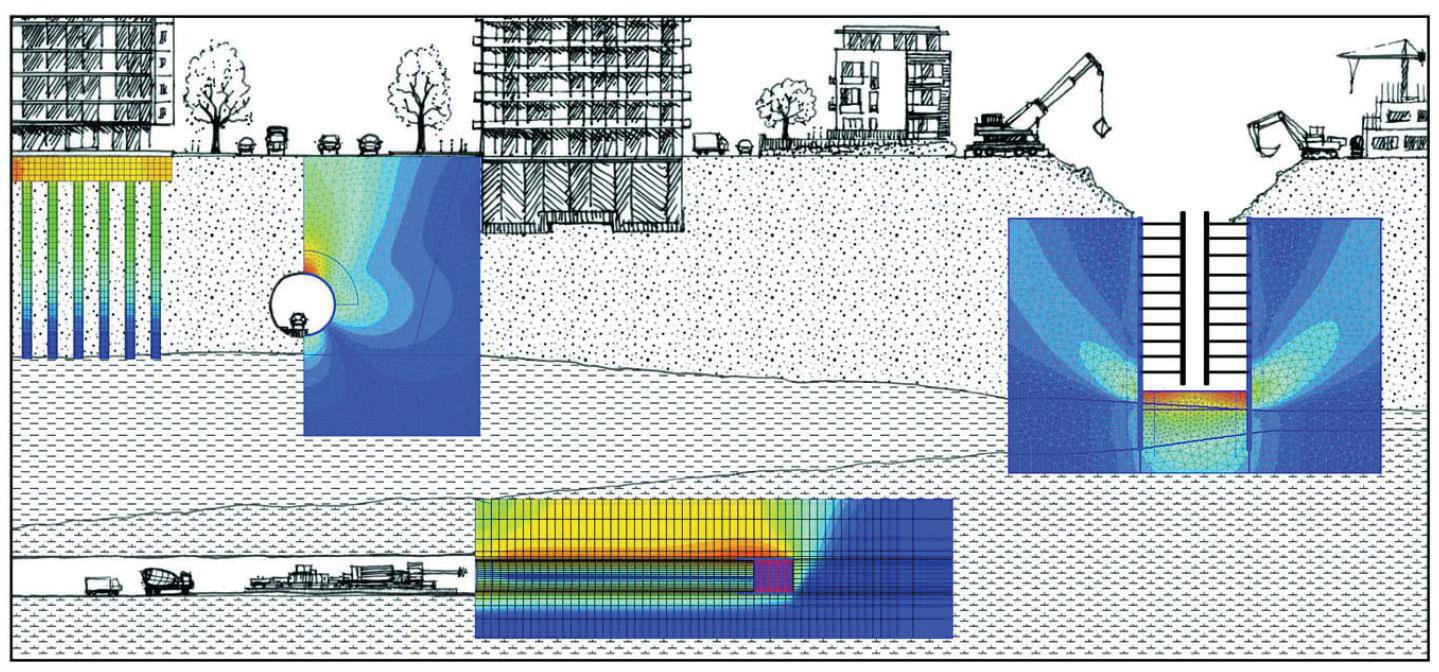


nodes (neurons), DL algorithms excel at processing vast amounts of data and uncovering intricate patterns and representations. DL algorithms, with their hierarchical learning capabilities, have witnessed remarkable success in complex tasks such as image and speech recognition.
In electrical engineering, DL is driving breakthroughs in image processing, power electronics and autonomous systems. By leveraging DL, engineers can develop advanced vision systems a.k.a. computer vision which enable accurate object detection, image classification and even facilitate autonomous vehicles functioning. Moreover, DL algorithms contribute to power electronics advancements, optimising energy conversion processes, improving efficiency and enabling early fault detection, thereby bolstering system reliability.
In electrical engineering, DL has emerged as a gamechanger across numerous applications. For instance, DL algorithms can revolutionise the field of smart grids by optimising energy distribution, predicting power demand patterns, and managing energy resources more efficiently. Additionally, DL techniques enable the development of intelligent systems for power quality monitoring, ensuring stable and reliable electricity supply while identifying and mitigating voltage fluctuations or harmonics.
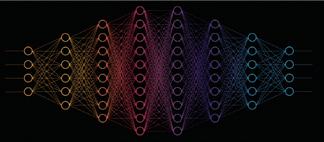
Furthermore, its ability to analyse and understand visual and audio data finds utility in robotics, where autonomous systems can use vision-based DL algorithms to recognise objects, navigate complex environments and perform tasks with precision. DL has also found applications in signal processing, enabling advanced techniques for noise reduction, signal denoising and signal reconstruction.
Example of DL algorithms are:
• Convolutional Neural Networks (CNNs): These are designed to process image and video data and are commonly used in tasks such as image classification, object detection and segmentation.
• Recurrent Neural Networks (RNNs): RNNs are designed to process sequential data, such as time series data, speech and text.
• Long Term Short Memory (LTSM): A variant of RNNs that is able to handle long-term dependencies in sequential data.
• Reinforcement Learning (RL): A branch of machine learning which focuses on how an agent can learn to make optimal decisions in an environment by
interacting with it. It draws inspiration from behavioural psychology, where the learning process is guided by rewards and punishments.
DL has emerged as a driving force behind the advancements in autonomous vehicles, paving the way for the realisation of a fully automated vehicle. By leveraging the power of DL algorithms, autonomous vehicles are becoming increasingly capable of perceiving their surroundings, making informed decisions and navigating complex road scenarios. Let’s find out how DL is revolutionising the world of autonomous vehicles and the specific DL algorithms being used to make autonomous vehicles a reality.
One of the key challenges in autonomous driving is the ability to accurately perceive the environment and make sense of the vast amount of sensory data collected by the vehicle sensors. DL algorithms, particularly CNNs, have revolutionised perception tasks in autonomous vehicles. CNNs excel at analysing visual data, making them ideally suited for tasks such as object detection, lane detection and traffic sign recognition.
Through training on large annotated datasets, CNNs can learn to identify and classify objects in realtime, enabling the vehicle to detect and track vehicles, pedestrians, cyclists and other obstacles on the road. This real-time object detection capability is essential to ensure the safety of autonomous vehicles and to enable them to make informed decisions based on their surroundings.
Furthermore, DL algorithms such as RNNs and LSTM networks have been instrumental in improving the understanding of dynamic aspects of driving, such as predicting the behaviour of other vehicles and anticipating potential hazards. These algorithms can process sequential data and capture temporal dependencies, enabling the vehicle to make predictions about the future trajectory of objects on the road.
To navigate autonomously, vehicles must possess robust mapping and localisation capabilities. DL algorithms, particularly Semantic Segmentation models, have proven effective in creating detailed maps of the environment by segmenting the scene into different classes such as roads, sidewalks, buildings and vegetation. This semantic understanding of the scene provides crucial information for the vehicle to plan its path and make navigation decisions.
In addition to perception and mapping, DL algorithms play a vital role in decision-making and control systems of autonomous vehicles. Reinforcement Learning (RL) algorithms, a type of DL algorithm, have been employed to train autonomous vehicles to make optimal decisions in complex and uncertain environments. RL algorithms learn through trial and error, receiving rewards or penalties based on their actions and gradually improving their decisionmaking policies. This approach allows autonomous vehicles to learn how to handle a wide range of scenarios, from merging into traffic to handling unexpected obstacles.
Tesla, one of the pioneers in autonomous driving, utilises a DL framework called Tesla Autopilot, which combines various DL algorithms to enable fully autonomous vehicles. The system incorporates a combination of CNNs for perception tasks, RNNs and LSTM networks for predicting object behaviour and RL algorithms for decision-making. This integration of DL algorithms allows Tesla vehicles to continuously improve their performance and to adapt to various driving conditions, pushing the boundaries of autonomous driving capabilities.

DL is revolutionising autonomous vehicles by enhancing perception, decision-making, mapping and control systems. DL algorithms such as CNNs, RNNs, LSTM networks, and RL algorithms are instrumental in enabling vehicles to perceive their surroundings, understand dynamic aspects of driving, create detailed maps and make optimal decisions. With ongoing advancements in DL and AI, we are moving closer to a future where autonomous vehicles equipped with advanced autonomous driving capabilities will transform transportation, making it safer, more efficient, and more accessible for all.
Trading energy poses a distinct challenge compared to trading commodities as it necessitates immediate delivery. This challenge presents significant hurdles for energy traders. Load forecasting plays a crucial role in assisting energy traders and regional providers in determining electricity generation and energy pricing. Utilising AI algorithms, trading can be enhanced by predicting energy demands and offering real-time energy prices, empowering traders to make informed buying and selling decisions. These algorithms attain greater accuracy by harnessing additional data from micro weather conditions, meter-level consumption data and social media posts, such as those found on Twitter.
Research has been conducted on LSTM and SVM models to achieve load forecasting at the individual household level. However, given the volatile nature of user behaviour, this approach relies on historical load and appliance measurements to yield superior outcomes compared to traditional methods. Another technique, known as the bottom-up hierarchical approach, puts forth a fresh perspective utilising smart meters. Initially, K-means Clustering is employed to group customers based on their similar energy usage patterns. Subsequently, deep neural networks (DNNs) are employed for each cluster, culminating in aggregation of electricity consumption from all clusters to obtain the overall load.
In conjunction with peer-to-peer (P2P) blockchain technology, integration of AI can play a vital role in accelerating the deployment of electric vehicle (EV) charging stations (Figure 3). AI technologies can assist EV owners in selecting and managing suitable charging stations. Conversely, blockchain-based platforms utilising the technology can facilitate discovery of charging stations and enable smart contracting on the charging station’s side. The charging process is initiated by AI through a request to block chain-based charging platform, including information such as the EV location and preferred charging time. Concurrently, charging stations continuously send queries to trading platform for new charging requests. Once a suitable match is found, a bidding process ensues and repeats until a mutually agreeable price is reached. Ultimately, AI displays a route map on consumer’s mobile or tablet screen. A smart contract is executed between the EV owner and the charging station, with the record securely stored on blockchain platform.
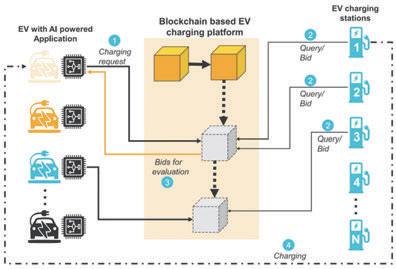
Just like other domains which apply AI, electrical engineering also faces various challenges such as governance, transparency, security, safety, privacy, employment and economic impacts.
Systems constantly share data with centralised authorities when connected to a digital system. Any system breach can leak confidential information which can be used against the consumer. A successful cyber-attack can be as damaging as a natural disaster. The world’s first successful attack happened in Ukraine in 2015, leaving thousands without power.
Cybersecurity is becoming increasingly essential to protect AI-enabled electric grids from leaking customer data. The growing threat from hacking has become a matter of significant concern, mainly because smart metering and automated control represent a growing share of global grid investments.
Processing large amounts of data consumes energy on its own. Therefore, when using AI-based systems in power plants, manufacturing, etc, it is crucial to analyse how to design energy-efficient data centres and manufacturing plants. In addition, engineers should keep in mind the
physical proximity of data centres and renewable energy generation plants.
As the fields of electrical engineering and DL continue to evolve, embracing the potential of AI, ML and DL will open up new frontiers for innovation and progress. These technologies empower engineers to optimise electrical systems, enhance performance, improve manufacturing efficiencies, optimise resource allocation and ensure efficient and reliable operation.
By leveraging the AI ability to analyse vast datasets and extract meaningful insights, electrical engineers can pave the way for a more sustainable, interconnected and intelligent future. As we delve deeper into applications of AI in electrical engineering, we will witness unprecedented advancements and unlock the full potential of this groundbreaking discipline.
[1] https://www.tesla.com/en_eu/support/energy/tesla-software/autobidder
[2] https://towardsai.net/p/l/teslas-self-driving-algorithm-explained
[3] https://pyimagesearch.com/2022/08/24/computer-vision-anddeep-learning-for-electricity/
[4] https://doi.org/10.1016/j.engappai.2020.104000

Written and Prepared by:



Director for Asaascom Engineering Sdn. Bhd. and TEC Telecom Sdn. Bhd.

Graduated from the University of Nottingham Malaysia with Master in Engineering with Honours, in Mechatronic Engineering, with a passion for automation.

Works in the construction industry, an IoT enthusiastic and a AWS certified Associate Solution Architect.

Assistant Professor at University of Nottingham Malaysia.

Lecturer at Taylor’s University Malaysia in Biomedical Engineering, Electronics, and Robotics.

In this era of rapid technological advancement, the potential of AI knows no bounds. Here’s a review of AI innovations across various industry. In 6G communication, we will witness the remarkable fusion of AI and cutting-edge technology, driving next-generation connectivity like never before. Alongside its transformative impact, AI emerges as a powerful ally to empower small and medium-sized enterprises (SMEs) on a remarkable journey of growth and success. Shifting gears to the Malaysian automotive landscape, AI is revolutionising the industry through groundbreaking research and development, redefining the driving experience of tomorrow. Additionally, research paper is presented on AI-driven indoor positioning systems that usher in an era
Senior lecturer and systems developer with thirty years of experience in teaching and research.

Specialises in embedded electronics for automotive advance powertrain and control.
Works with MIMOS Berhad as Senior Staff Researcher.
Associate Professor at University of Nottingham Malaysia.
of seamless navigation and, in the realm of healthcare, remarkable strides are being made, with the development of an AI-based risk indicator of cardiovascular diseases, leading the way towards proactive and personalised healthcare solutions. Embrace the potential, as AI stands poised to shape a future brimming with unprecedented possibilities.
6G Communication
5G will lay the groundwork for 6G with AI applications. 6G is envisioned to provide better connections for people and things as well as embrace the trend of a smart society, continuing the transformation from connected people and things to connected intelligence.
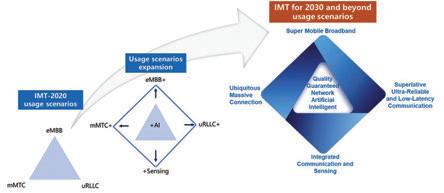
AI integration is expected to play a significant role from IMT-2020 (5G) to IMT-2030 (6G) and beyond (Figure 1). The network infrastructure may leverage AI capabilities to optimise network performance, resource allocation and user experience. AI-powered devices and applications can enhance personalisation, predictive analytics and contextual understanding.
6G is expected to bring computing capabilities closer to the network edge. This shift toward edge computing can be complemented by AI algorithms running directly on edge devices, enabling real-time processing, decisionmaking and data analytics. AI at the edge can support applications such as autonomous vehicles, smart cities and IoT devices by processing data locally and reducing reliance on centralised cloud infrastructure.
The management and optimisation of Quality of Service (QoS) are expected to benefit from AI-driven approaches where AI algorithms can analyse network conditions, traffic patterns and user demands to intelligently allocate network resources in real-time. Network faults, anomalies and performance degradations can be identified to trigger automated responses and self-healing mechanisms to mitigate the impact on QoS.
An example of use case AI for 6G is connected UAV (unmanned aerial vehicle). This can be interpreted as smart drones or aircrafts which can be remotely controlled and pre-programmed for specific tasks. Fragmented reference signal received power (RSRP) can cause radio link failure, frequent handovers and ping-pong handover events. To provide continuous UAV connectivity in the sky, reinforcement learning is a potential solution for aiding the development of optimal handover rules and ensuring stable communication at minimum handover cost.
By harnessing the power of AI, 6G communication systems can achieve intelligent and adaptive QoS management, leading to improved network performance, optimised resource utilisation and enhanced user satisfaction.
The development of any intelligent system, be it predictive maintenance, autonomous system or digital twin simulation, generally involves algorithms and models.
The algorithm development involves problem identification, data gathering, data cleaning and programming. This is a manpower-intensive process. Once the algorithm is developed and the model architecture identified, the next step is to train the model. The training process requires a large amount of dataset and a lot of computing power.
A large amount of data requires large computer resources such as computing power and storage. This involves large capital investments in computing infrastructure and human resource planning which, unfortunately, is generally beyond the reach of SME industry players with limited resources. So, are there other options for SME industry players? AI algorithm marketplace and cloud computing can help.
The AI algorithm marketplace is a platform that connects developers and users, allowing them to buy, sell and share AI algorithms. SME industry players can take advantage of the vast collection of pre-built algorithms available in the marketplace and select one that best suits their use. This means huge savings as the algorithm need not be built from scratch and can be obtained at a fraction of the cost as compared to investing in extensive in-house development. These algorithms generally come with documentation and, in some cases, with Application Programming Interfaces (API) as well as tools for easy integration into the existing system or application. This greatly reduces the iteration cycles and speeds up the prototype to production deployment time. Examples of AI algorithm marketplaces are AWS Marketplace for Machine Learning, Google Cloud AI Marketplace, Microsoft Azure Marketplace, Kaggle and Algorithmia.
Cloud computing platform provides on-demand computing resources over the internet. The offers range from infrastructure as a Service (IaaS), Platform as a Service (PaaS) to Software as a Service (SaaS) and allow users to access computing resources such as virtual machines, storage, databases, networking capabilities and development tools etc. without the need to manage or build the underlying infrastructure.
On-demand usage or pay-as-you-use model allows the user to pay for the computing resources’ usage time. This is a fast and cheap alternative for any organisation to train its AI model using the cloud computing platform as compared to building an expensive computing infrastructure. The platform also provides scalability with the ability to scale the resources up or down, depending on the usage, ensuring optimal resource utilisation and cost efficiency. These platforms are generally highly reliable with high availability. Examples of cloud computing platform providers are Amazon Web Services (AWS), Microsoft Azure, Google Cloud Platform (GCP), INM Cloud, Alibaba Cloud or Alicloud and Nvida NGC Cloud.
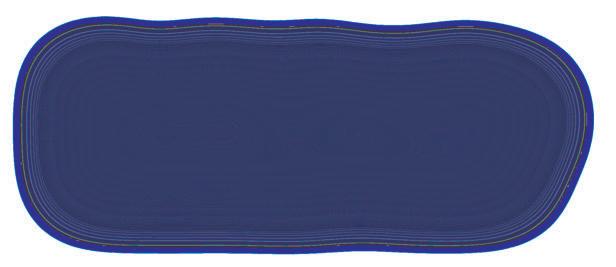















With a clear focus, strategic planning and a willingness to learn and adapt, SMEs can begin their AI journey and gradually unlock the benefits of AI for their businesses.
Revolutionising the Automotive Industry
AI has emerged as a game-changing technology in various sectors and the automotive industry is no exception. In Malaysia, local companies, institutions of higher learning and government agencies have been actively researching and developing AI solutions to revolutionise the automotive industry. Their collaborative efforts are yielding promising results and driving AI innovation in the local automotive industry.
Automotive companies in Malaysia recognise the transformative potential of AI in revolutionising the industry. One of the key areas where local automotive companies are investing in AI research and development is vehicle safety. They are exploring advanced driver assistance systems which use AI-powered sensors and cameras to monitor the vehicle surroundings and to assist drivers avoid collisions, detect pedestrians and ensure safe lane-keeping.
AI-based autonomous driving systems can enable safer and more efficient transportation, reduce human errors and enhance overall road safety. AI also plays a pivotal role in optimising energy consumption and reducing emissions. By analysing driving patterns, road conditions and various vehicle parameters, AI can help in developing eco-friendly solutions that minimise the environmental impact of vehicles.
Another area where local automotive companies are exploring AI is predictive analytics. By analysing vast amounts of data collected from vehicles and various sources, AI can provide valuable insights into improving maintenance practices, optimising fleet management and enhancing overall operational efficiency.
Malaysian universities have also been at the forefront of AI research in the automotive sector. Research teams are focusing on developing intelligent systems for vehicle control, driver assistance and advanced driver monitoring. They are conducting experiments and simulations to optimise vehicle performance, enhance energy efficiency and minimise environmental impact. They are also actively engaged in interdisciplinary collaborations, combining AI expertise with automotive engineering to tackle complex challenges in smart transportation and mobility solutions.
The government, through its agencies, recognises the significance of AI in shaping the future of the automotive industry. Initiatives are underway to support research and development activities, foster innovation and create an ecosystem conducive to AI adoption in vehicles. Government agencies are providing funding, grants and incentives to encourage collaborations between industry and academia. They are also facilitating knowledgesharing platforms, conferences and workshops to promote AI research and application in the automotive sector.
The collaborative efforts between local companies, universities and government agencies are yielding promising results and driving AI innovation in our
automotive industry. These advancements are expected to bring numerous benefits, such as enhanced vehicle safety, reduced congestion, optimised energy consumption and improved mobility experiences.
An indoor positioning system (IPS) is used to determine the location of people or objects in an indoor environment. Indoor navigation systems provide route guidance in indoor environments, especially in large and complex spaces. The development of indoor navigation systems includes several components, such as generating an indoor map to be used as the basis of the navigation system, mapping points of interest (POI), indoor positioning to locate a user’s current position and route guidance instructions to guide the user to the desired destination.
The ground floor of Block D at the Faculty of Engineering building in the University of Nottingham Malaysia was used to demonstrate the development.
Indoor mapping (Figure 2) using a ZED 2 stereo camera is used to reconstruct a 3D model of the indoor environment. The stereo camera consists of two identical camera lenses placed at a distance from each other, allowing the camera to capture two images of the same scene from slightly different perspectives. The resulting images provide 2D information about the environment, while the depth information is calculated using triangulation between the stereo images. The ZED 2 camera has built-in IMU, which allows tracking of the camera movement (also called camera trajectory). The camera trajectory is then combined with the stereo images to create a 3D model of the environment.
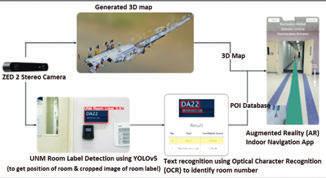
The generated 3D model eliminates the need to create the 3D map from the 2D floorplan and is useful for environments with no floorplans readily available. POI mapping is performed using object detection and optical character recognition (OCR), speeding up the process significantly. The indoor positioning system combines motion tracking and QR code repositioning. As for route guidance, augmented reality (AR) is chosen to visually guide the user by overlaying the path on top of the realtime camera feed from the user’s mobile phone. The POI data is imported into Unity, a cross-platform game engine that supports AR development, to create an Android-based real-time indoor navigation system.
Figure 3 shows the path generated from the user’s current location to the desired destination and a QR code next to the signage of Block D that is used to determine the user’s starting location. When a QR code is scanned, the mobile application updates the user’s current location based on the QR code and generates an updated path to guide the user to the selected destination (Figure 4).
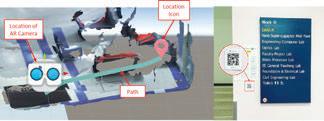

In conclusion, AI-powered indoor positioning systems hold great promise for transforming the way we navigate and interact within indoor spaces. It is an exciting era for indoor positioning, driven by the ingenuity of AI and its potential to shape the future of indoor navigation.
Cardiovascular disease poses a significant risk to individuals but often goes undetected until symptoms become life-threatening. However, a medical AI-based system can indicate the risk of cardiovascular diseases, thus reducing the occurrence of severe cases and sudden death.
The data acquisition system involves the use of a wearable device with a pressure sensor on the wrist that acquires data non-invasively. The research obtains pairs of radial and aortic signals from existing databases, such as PhysioNet and HaeMod. To convert the radial waveforms to aortic waveforms, a newly-developed Electrical Impedance Function (EIF) is employed and compared to other conversion methods like Generalised Transfer Function (GTF), N-Point Moving Average (NPMA) and Adaptive Transfer Function (ATF). The EIF demonstrates comparable performance with the GTF and offers better
estimation compared to NPMA and ATF (Figure 5), as indicated by metrics such as average RMSE, MAPE, peak difference and computational time.
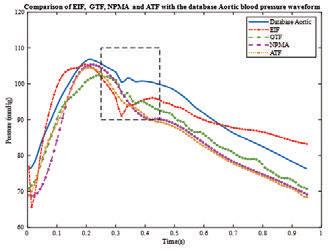
5: The Estimated Central Aortic Blood Pressure of All the 4 Methods Against the Corresponding Database’s Central Aortic Blood Pressure Waveform. Highlighted is the Feature of the Database Aortic Waveform Captured by the EIF Method
The transformed signals are then used for risk indication by utilising Vincent Rideout’s cardiovascular model to produce data for a Convolutional Neural Network (CNN). The study identifies 16 parameters from the model that significantly influence the aortic wave. A regression-based CNN is trained using aortic waveforms as inputs and their corresponding 16 parameters as outputs. When tested with aortic pulse waveforms in individuals with cardiovascular disease, converted from radial pulse waveforms using both EIF and GTF separately, two key parameters (RL2 and RA1) are observed to be indicative of cardiovascular diseases. These parameters are believed to relax simultaneously, allowing smooth blood flow in the closed-loop framework and reducing the resistance value.
Experiments conducted with the trained CNN revealed that the values of RL2 and RA1, when acclimated to cardiovascular conditions, were below certain thresholds. With EIF as the transfer function, the values were equal to or below 10.640691 g·s/cm4 and 9.7667933 g·s/cm4, respectively. Similarly, when using GTF as the transfer function, the values were equal to or below 10.530969 g·s/cm4 and 9.8313036 g·s/cm4, respectively. By using these threshold values as identifiers, an 80.0% classification accuracy was achieved with EIF and an 82.5% accuracy was achieved with GTF when applied to cardiovascular disease data.
Overall, the research demonstrates that the proposed system can identify cardiovascular disease with an 80% accuracy rate and a 60% accuracy rate for healthy signals. This performance is considered reasonably good and can increase the number of early detections, thereby helping individuals at risk of cardiovascular disease receive timely intervention.
Written and Prepared by:

In an era defined by rapid technological advancements and a growing emphasis on entrepreneurship and solving immediate engineering related problem, the need for spaces that nurture innovation and creativity has become increasingly apparent. Enter the makers lab (also known as makers space), a dynamic and collaborative environment designed to inspire and empower individuals and industry professionals to bring their ideas to life. Combining elements of a workshop, a laboratory and a creative studio, the makers lab serves as a hub for makers, tinkerers, inventors and artists alike.
With Information and Communications Technology Special Interest Group (ICTSIG) taking the lead, The Institution of Engineers Malaysia (IEM) has set up an “IEM Maker Space” at Wisma IEM in 2019. In recognition of other well established maker spaces set up in Malaysia, ICTSIG also arranged for a technical visit to MRANTI Makers Lab on 9 May 2023.
Malaysian Research Accelerator for Technology & Innovation (MRANTI) formerly known as Technology Park Malaysia is Malaysia’s central research & innovation commercialisation agency that accelerates ideas to market under Ministry of Science, Technology and Innovation (MOSTI). MRANTI Park is located in Bukit Jalil integrated with 4IR-ready infrastructures and facility for innovators and entrepreneurs to transform breakthrough idea into reality.
Situated within MRANTI Park, MRANTI Makers Lab is open to creators, innovators, school students, university students, youth and educators to give life to ideas with a variety of new-age technologies, tools and facilities. MRANTI Makers Lab on-site facilitators will provide guidance, whether assisting with project or giving demonstrations on using the Makers Lab state-of-the-art equipment.
On the day of IEM technical visit to the MRANTI Makers Lab, Mr. Mohd Rozaini Razman, Mr. Ramesh Pillai, Mr. William Alvisse and the MRANTI Makers Lab team welcomed the technical visit participants. MRANTI Makers Lab team introduced to the participants the state-of-theart tools and technologies, ranging from 3D printers, laser engraver, laser cutters and CNC millers to electronics
components, prototyping equipment and hand tools. This comprehensive array of resources enables users to engage in a wide range of hands-on activities, such as designing and fabricating physical objects, developing interactive installations and experimenting with new technologies.
As explained by the MRANTI Makers Lab team, the MRANTI Makers Lab also provides consultancy and services on 3D modelling, technical advisory, customised production and programme development. Through these services, one would get technical guidance from MRANTI Makers Lab experts to upscale prototypes.
Besides that, for those wanting to explore new areas of knowledge and develop skills in various fabrication technologies, MRANTI Makers Lab organise workshops on 3D design, drones, programming, electrical, electronics and embroidery. According to the MRANTI Makers Lab team, details of these workshops can be found on MRANTI Makers Lab website.
The participants were then taken to the next agenda of the technical visit, besides the MRANTI Makers Lab. MRANTI Makers Lab also collaborates with Katapult on Scuttle Robot project. SCUTTLE™ is a modular, opensource robotics platform designed by “Makers” – students & engineering staff for a flexible, extensible, durable, and affordable platform to teach the mobile robotics engineering course. Scuttle Robot has strong autonomous capability, IoT connectivity and payload performance; backed by a supportive open-source community and easily available design documentation.
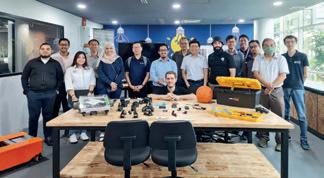
By the end of the technical visit, the participants understood more on the primary objectives of a makers lab, that is to democratise innovation. By providing access to cutting-edge tools and technologies, the MRANTI Makers Lab ensures that anyone with a passion for creation can participate in the process of invention, regardless of their background or expertise. This inclusivity fosters diversity and brings together individuals from various disciplines, including engineering, design, art and entrepreneurship, creating a vibrant community of makers who collaborate and learn from one another.
Moreover, the MRANTI Makers Lab serves as a catalyst for problem-solving and entrepreneurial endeavours. It offers a platform for individuals to prototype and iterate on their ideas, transforming them into viable products or solutions. By providing a supportive ecosystem of mentors, workshops, and networking opportunities, the lab nurtures the growth of start-ups and facilitates the transition from concept to market. This approach empowers individuals to become not just makers, but also innovators and entrepreneurs, driving economic growth and societal progress. By providing a physical space where imagination can thrive and ideas can be materialised, the MRANTI Makers Lab sparks innovation and inspires the next generation of inventors and creators.


–12.30pm
https://goo.gl/maps/XkAo8e mtJp6VF9nq8 18 Aug (Fri) 2023


Lot 5, Pekan Bukit Selambau, 08010 Bukit Selambau, Kedah.

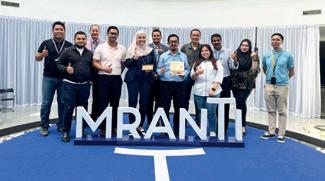


Coordinator:
Ir. Wong Jian Choon 016- 477 5227
Special Note:


Kindly be informed that Leader Solar Energy Sdn. Bhd. practises safety measures during site visits:
All participants must adhere to safety instructions given by the officers-in-charge and signages while at the site. All participants must prepare their own safety helmet & safety boots. Leader Solar Energy Sdn. Bhd. shall not be held responsible for any untoward incident that may happen during the site visit. Leader Solar Energy Sdn. Bhd. and IEM will not be held liable for any loss or damage incurred.
Participants have to arrange for their own transport to and from the stated venue.
Introduction by Leader Solar Energy Sdn. Bhd. 9.00am - 9.15am
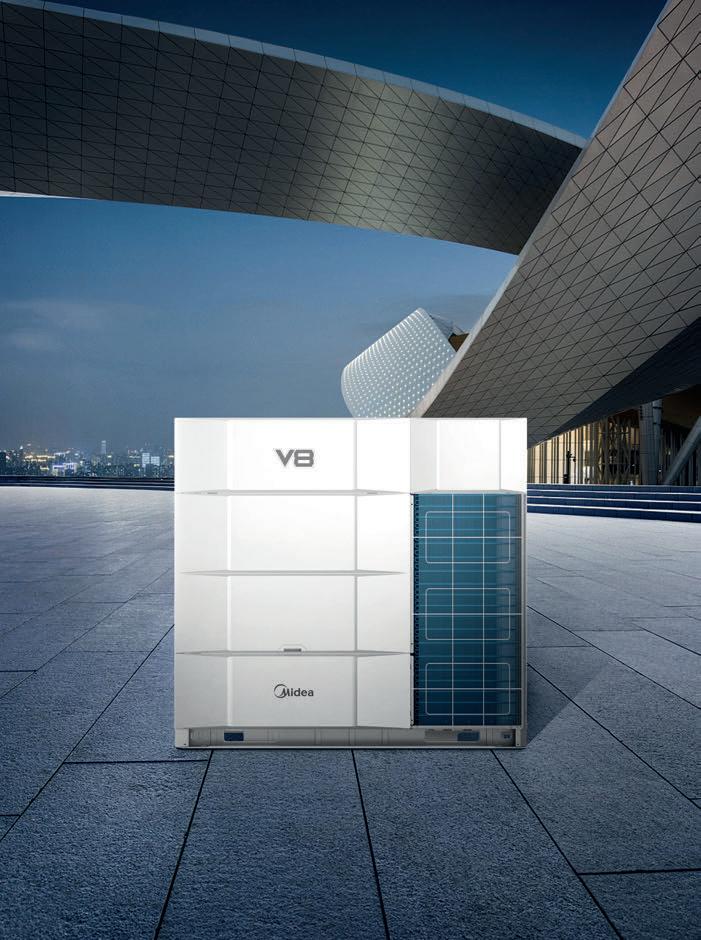


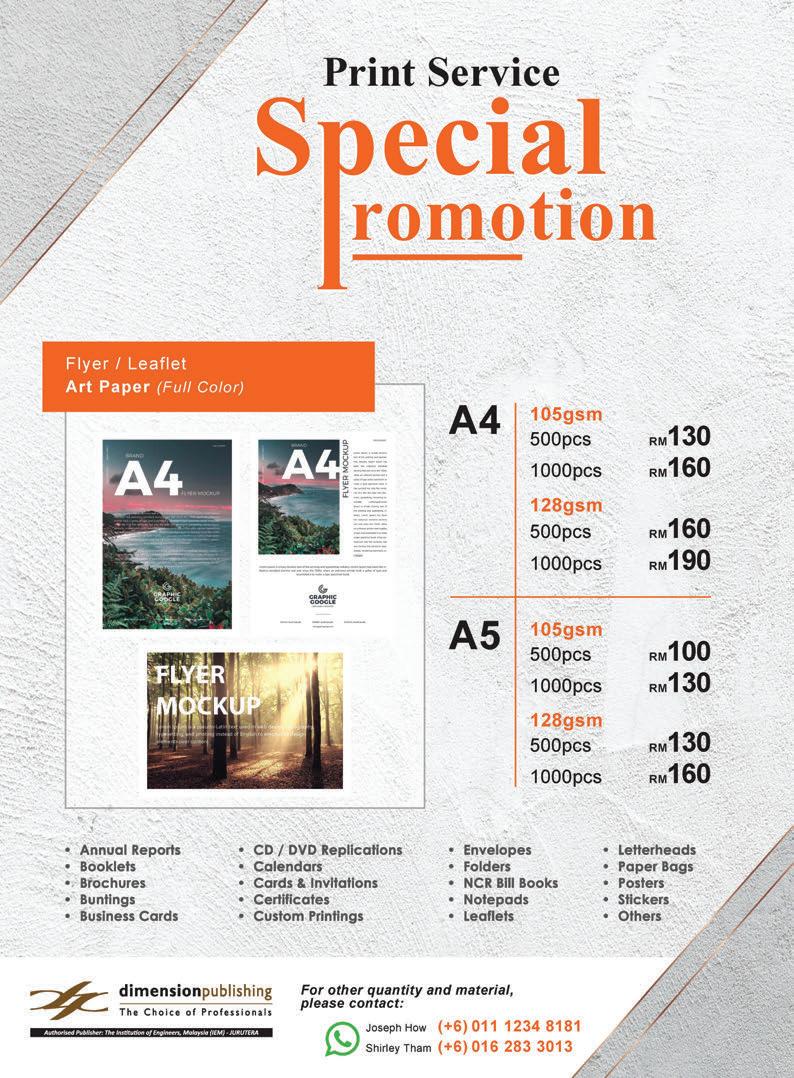
Written and Prepared by:

The ICT Special Interest Group (ICTSIG) organised a technical visit to the Centre of Unmanned Technologies (CUTe) at the International Islamic University Malaysia on 8 March 2023.
CUTe is designed for advancing scientific studies and engineering development through human-robot collaboration. It was established through the collaboration of the Ministry of Investment, Trade & Industry (MITI), the Ministry of Higher Education (MoHE) and the International Islamic University Malaysia (IIUM).
Located in the Faculty of Engineering in IIUM Gombak, Selangor, its main function is to bridge the gap between researchers, industries and communities by developing and innovating unmanned technologies which can reduce human participation. CUTe is positioned to collaborate with industries in the areas of small/large scale prototype systems and validation of the unmanned system through system demonstration in real field. Figure 1 shows its Industry Academia Collaboration model.
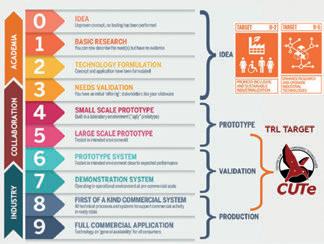

All projects developed in CUTe are partnerships with local engineering corporations which aim to commercialise the system. The group from IEM visited the Unmanned Surface Vessel systems where unmanned boats or surface vessels were designed and developed through strategic collaboration with Hydrokinetik Technologies Sdn. Bhd. for an innovative autonomous survey vessel. Prior to this, surveys were done by humans using equipment on boats but these surveys were limited by weather conditions. The collaboration innovates the survey techniques by incorporating autonomous navigation system, obstacle avoidance and collision avoidance. The autonomous survey vessel is powered by electricity as a sustainable and environmentally friendly solution. Using the real time monitoring system, survey data can be collected in real time with accurate control and precise data. The survey can be conducted at any time (day or night) and in all weather conditions, including rain.
In the healthcare sector, MediBot, a robotic assistant for healthcare service providers during the Covid-19 pandemic was developed. MediBot helps healthcare workers and doctors interact with patients and takes noninvasive measurement of the patients.
Our products:




Another project was an Unmanned Aerial Vehicle for Hajj-crowd surveillance, a project carried out in cooperation with Saudi Arabia. There are many potential areas and opportunities for implementing smart and unmanned systems which can replace humans in risky and dangerous work such as traffic and toll management, environmental monitoring in risky areas in the oil and gas industry, healthcare services, food securities, plantation industries and defence & security.
The IEM group also visited other facilities in CUTe, including the Embedded AI lab, Maritime Robotic Lab, Aerial Robotic Lab, human machine interface and CNC machining facilities. The visit ended with token of appreciation handed over by Ir. Amir, Chairman of ICTSIG.
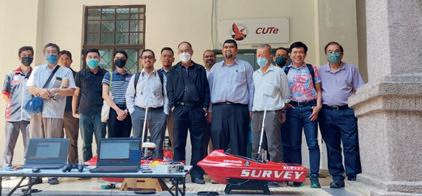
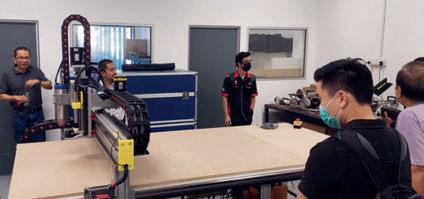
No. 45-3, Jalan PJU 5/20
The Strand, Kota Damansara 47810 Petaling Jaya Selangor Darul Ehsan
Tel : 603 6142 6638
Fax : 603 6142 6693
Email : jasonklc@nehemiah-grp.com
Email : julia@nehemiah-grp.com
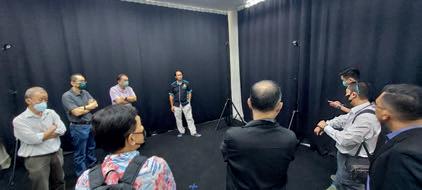
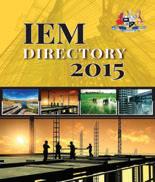
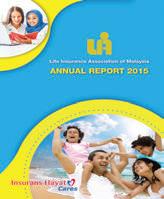

















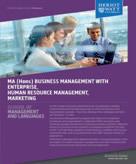





















Written
and Prepared by:

The IEM Electronic Engineering Technical Division (eETD) held a webinar on Lean Manufacturing on 22 November 2022. The speaker was Assoc. Prof. Dr Yeap Gik Hong, the Head of Operations at UOW Malaysia, based at the KDU Batu Kawan campus in Penang. Dr Yeap is a multi-disciplinary engineer with a degree in Mechanical Engineering & Manufacturing Systems, a Masters in Advanced Materials and Manufacturing as well as a PhD in Electronic Engineering.
After a brief introduction by Ir. Dr Khor Jeen Ghee, Dr Yeap began his talk with an overview of what Lean Manufacturing means. In a nutshell, Lean Manufacturing is a philosophy of “doing more with less” – putting in less effort, less equipment and fewer resources – and doing this in the shortest time possible, which will result in less stress for the people. The aim is to focus on the elimination of waste in every area of the organisation. He provided examples where Lean Manufacturing principles may be applied, not only in the actual manufacturing process but also in other associated areas of business such as accounting and marketing.
After further explanation on the subject, Dr Yeap summarised Lean Manufacturing as a systematic approach to identifying and eliminating waste (or non-value-added activities) by regularly assessing and reviewing the production flow processes. Often, this exercise is triggered by a request from the customer.
Next, he presented a brief history of Lean Manufacturing, starting from the work of Eli Whitney in the 1800s and Henry Ford’s implementation of the production line in the 1910s-1930s to the early works of Japanese car companies by Eiji Toyoda, Shigeo Shingo and Taiichi Ohno in the 1950s. Later, in the 1990s, the practices of the Toyota Production System were introduced to the global audience via the seminal book, The Machine That Changed the World, by JP Womack, D.T. Jones and D. Roos. This book has made the term Lean Manufacturing into what it is known for today.
Next, Dr Yeap went into the definition of waste by discussing the concept of Value-Added vs Non-Value-Added activities, the latter being waste.
Value-Added activities are those that increase the market form or function of a product or service. Conversely, Non-Value-Added activities are defined as activities that do not enhance market form or function, or as activities which are simply unnecessary. To further elaborate this, Dr Yeap cited examples from a furniture factory.
This was followed by an introduction of Muda, the Japanese term for “waste”, as well as a discussion on the 7 major types of waste found within a value chain, namely transportation, inventory, movement, waiting, overprocessing, over-production and defects. Each of the 7 wastes was then discussed in greater detail, with interesting examples provided to further the understanding of the different types of waste.
Over the course of the talk, Dr Yeap explained many of the Lean concepts in greater detail. These included the 5 principles (value, value stream, flow, pull and perfection) and tools such as Jidoka, JIT, SMED, Kaizen, Poka Yoke and Hoshin Kanri. The participants also learnt about the House of Lean, how Heijunka could be used to reduce production fluctuations and the calculation of Takt Time, as well as examined some examples of Kanban implementation.
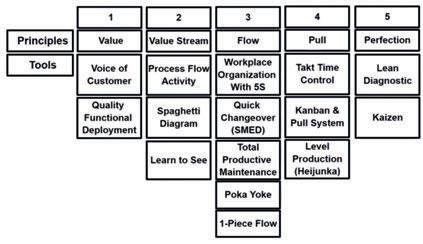
During the Q&A session, Dr Yeap and the participants had further discussions on the applications of Lean principles in construction, the impact of 4IR and how some engineers failed to devote enough time on Gemba Overall, the talk was filled with detailed information and fascinating examples of Lean Manufacturing.

ANNOUNCEMENT
IEM PAHANG BRANCH SESSION 2023/2024
We are pleased to inform you that the 11th Annual General Meeting of The Institution of Engineers, Malaysia, Pahang Branch was held at PPAP, Kuantan on Saturday, 3rd June 2023. The new elected office bearers for the key positions in the IEM, Pahang Branch for session 2023/2024 comprise of :
Chairman
Vice Chairman 1
Vice Chairman 2
Hon. Secretary
Hon. Treasurer
Internal Auditor
Elected Council Member
Appointed Council Member
Ir. Ab Rahman bin Hashim
Ir. Harzah Masni binti Ramli
Ir. Mohd Azrul Nizam bin Mohd Zahir
Ir. Dr Azhani binti Zukri
Ir. Dr Chin Siew Choo
Ir. Dr Asnul Hadi bin Ahmad
Ir. Ts. Mohd Ridhuan bin Ismail
Ir. Dr Norazwina binti Zainol (Chemical)
Ir. Mohd Yunus bin Yusof (Mechanical)
Ir. Dr Muhamad Zahim bin Sujod (Electrical)
Ir. Hj. Salimi bin Md Saleh (Civil)
Ir. Ts. Aideelnorfahmee bin Mohamad (Civil)
Ir. Dr Mohd Rashidi bin Maarof
Ir. Hj. Mansor bin Ibrahim
Ir. Zakaria bin Muhammad
Ir. Dr Marzuki bin Ab Rahman
Pn. Siti Hanis Syazana bt. Mohamad
Pn. Fazian binti Mat Zamberi
www.alphasel.com alphamail@alphasel.com




Yes! I would like to be a subscriber of The Institution of Engineers, Malaysia’s publications
Name: _________________________________________________________________________________________________________
Mailing Address: _________________________________________________________________________________________________
Company/Institution: ______________________________________________________________________________________________
Telephone
New Subscriber Renewal
Please commence my subscription from: _________________________(month/year) Signature: _______________________________
To start your subscription of IEM’s publications, complete this form and mail it back to the address below. For faster processing, fax it to: +603 7493 1047. Thank you.
What is your primary job title?
Corporate Management (including chairman, president, proprietor, partner, director, vice president, general manager, division manager, import/export manager, other corporate title)
Management (including project/contract/equipment/service/transport district manager, clerk of works, other technical or operating manager)
Engineering/Design (including chief engineer, chief designer, civil/ highway/mechanical/planning engineer, other engineering/design title)
Buying/Purchasing (including chief buyer, buyer, purchasing other buying/purchasing title)
Titles allied to the (architect, consultant, surveyor, research and development professor, lecturer, supervisor, superintendent, inspector or other allied title)
Others (please specify) ____________________________
What type of organisation do you work in? (Tick one box only)
Contractor
Sub-contractor specialist
Design and build contractor
Consulting engineering/architectural/quantity surveying practice
Mining/quarrying/aggregate production company
Petroleum producer
International/national authorities
National/regional/local government
Public utilities (electricity, gas, water, deck and harbour, other)
Manufacturer
Distributor/importer/agent
Construction department of large industrial/Commercial concern
Association/education establishment/research
Construction equipment hire/rental company
Project/construction management consultancy
Others (please specify) _______________________________
What are the main activities of your organisation? (Tick all that apply)
Constructions of: Manufacturer of:
Roads/bridges

Construction equipment
Dams/reservoirs/irrigation Cement structures Other construction materials
Foundations/tunnels
Structures/steel work
Distribution
Construction equipment
Construction materials
Building (commercial, industrial) Hire/rental of construction equipment
Housing Design
Construction management Earth-moving/open cast mining
Deep mining Aggregate production
Others (Please specify) _________________________________________
Rate (Please tick)
RM360.00 - 12 issues of JURUTERA
RM84.00 - 2 issues IEM Journal (Half-yearly)
Terms and Conditions:
1) The subscription is to be prepaid.
2) Please make cheque payable to Dimension Publishing Sdn. Bhd.
3) Subscriptions are not refundable.
4) Magazine/s will be sent to the mailing address given.
5) Students are entitled for a 20% discount from the above subscription rate.
6) Students must submit a photocopy of the student card together with the payment.
7) The above rate is inclusive of delivery charges and applicable in Malaysia only.
8) Additional delivery charges will apply to overseas subscribers.
For subscription enquiries, please contact +603-7493 1049 or email to info@dimensionpublishing.com
Written and Prepared by:

The IEM Sabah branch celebrated its 45th anniversary with a grand Annual Dinner on 18 June 2023. With an attendance of about 900 diners, the event was honoured by the presence of YB Datuk Ir. Shahelmy Yahya, the Deputy Chief Minister and Public Works Minister of Sabah.
Ir. Willy Chin Tet Fu, Chairman of IEM Sabah Branch, gave a welcome speech in which he emphasised the importance of reflecting on our rich engineering history, adapting to the present and envisioning a promising future. He encouraged collaboration with the government to tackle challenges such as power and water supply shortages.
IEM President Ir. Prof. Dr Norlida Buniyamin expressed gratitude to IEM Sabah branch for upholding the social image of the engineering profession. She stressed on the significance of learning from past experiences and applying them to the current context. She also highlighted
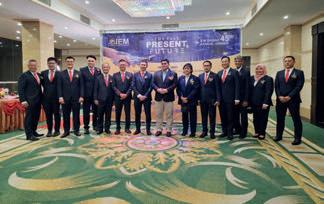

the new Strategic Plan Actions designed to develop the engineering industry in Sabah and encouraged members to seize opportunities in engineering technologies and expertise emerging from Nusantara, Indonesia.
Datuk Ir. Shahelmy, who was also a former executive committee member of IEM Sabah, commended Women Engineers Section (WE) and Young Engineers Section (YES) for their active involvements to make IEM even more dynamic. He talked about the integration of innovation and expressed the government’s commitment to improving infrastructure in Sabah by collaborating with organisations like IEM Sabah.
The event offered IEM members the opportunity to reflect on their achievements, anticipate future advancements and strengthen organisational bonds. It was a celebration of the collective journey of the engineering community in Sabah, marked by dedication and gratitude.

Aleaning tower is a constructed structure that does not stand perpendicular to the ground and, when observe externally, appears tilted to one side. It can either be intentionally designed this way or caused, unintentionally, by other factors such as design error or unstable ground.
Except for those intentionally designed, a leaning tower is, by engineering logic, considered unstable and likely to collapse. However, there are numerous leaning towers in the world caused by unstable foundations and these have continued to stand over long periods. Some are now protected heritage sites, appreciated by both scholars and visitors.
The most famous leaning tower is the Pisa Tower in Italy. In Malaysia, there is a century-old leaning tower in the town of Teluk Intan on the bank of Perak River. As I had always been fascinated by this structure, my family and I signed up for a day bus trip to visit the Leaning Tower of Teluk Intan in May 2023.
We arrived at the tower at around 1.00 p.m. As the bus was approaching the tower, I could see what looked like an ancient pagoda standing solitary in the centre of a flat terrain paved with bricks (Picture 1).
Written and Prepared by:

The design is greatly influenced by the Chinese pagoda architectural style. The internal part of the tower is divided into 3 levels but from the outside, it looks like an 8-storey pagoda with a total height of 25m. The foundation diameter is 13m and the tower tapers to a diameter of 8.2m at the top. The upper level is fitted with a large steel tank, measuring 5m in height. Initially, this was used to store water for community usage during drought or in case of fire. Later, local residents donated money to purchase a clock that was fitted to the tower. The clock was designed by James Wilson Benson. Thereafter, the structure began a new function as a clock tower.

My son and I bought tickets to enter the tower while my wife, daughter and a friend stayed outside to take photos. Inside the tower are information boards on the history of the tower which was built by a Chinese architect named Leong Choon Chong. Construction began in 1885 and was completed in 1886. It was made of wood and bricks.
Compounded with the heavy tank filled with water, the tower started to tilt to one side.
There are old photographs and numerous artifacts placed inside the tower for visitors to view. At every level, there is a spiral wooden staircase along the internal wall of the tower. While climbing the stairs, one can view the entire circular floor of the bottom level and upon reaching the upper level, one can see the whole round floor of upper level.

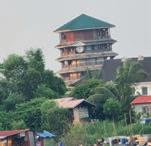
Due to its high elevation and strategic location, the tower also functioned as a beacon to guide boats entering the old Teluk Intan Port. During the Japanese Occupation in 1941, it was used as a watch tower to look out for enemy invasions. In 1896, Teluk Intan was hit by a massive flood and this softened the foundation.
I was only able to climb to Level 2 because the staircase leading to Level 3 had been barricaded (Picture 2). At Level 2, I could see the curved bottom of the steel tank which formed part of the ceiling surface. Although it is more than a century old, the tank still looks solid except that now, it is empty and the bottom drain valve has been dismantled. At this level, visitors can walk around and enjoy a 360o view of Teluk Intan town. When standing on Levels 1 and 2, I did not get the feeling of standing on a slanted floor. The tilted condition is obvious only when viewed from the outside and even more significant when viewed from the direction of the Perak River (Picture 3). It is amazing that the tilting tower has not collapsed. Its tilted condition not only defies the logic of engineering but it has also survived the devastations of flood and war over the years.
The leaning tower is the pride of the residents of Teluk Intan and it is commendable that it has been beautifully preserved.



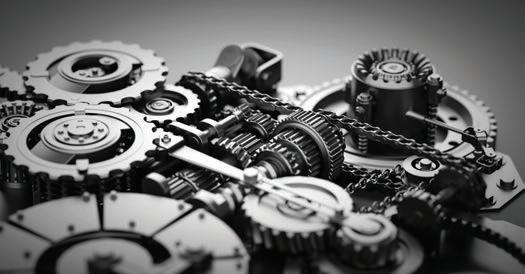


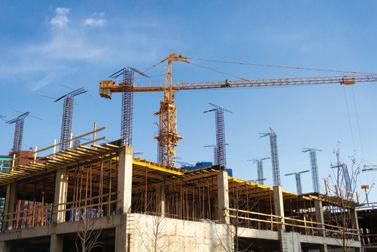




Tarikh: 21 Julai 2023
Kepada Semua Ahli,
SENARAI CALON-CALON YANG LAYAK MENDUDUKI
TEMUDUGA PROFESIONAL TAHUN 2023
Berikut adalah senarai calon yang layak untuk menduduki Temuduga Profesional bagi tahun 2023.
Mengikut Undang-Undang Kecil IEM, Seksyen 3.8, nama-nama seperti tersenarai berikut diterbitkan sebagai calon-calon yang layak untuk menjadi Ahli Institusi, dengan syarat bahawa mereka lulus Temuduga Profesional tahun 2023.
Sekiranya terdapat Ahli Korporat yang mempunyai bantahan terhadap mana-mana calon yang didapati tidak sesuai untuk menduduki Temuduga Profesional, surat bantahan boleh dikemukakan kepada Setiausaha Kehormat, IEM. Surat bantahan hendaklah dikemukakan sebulan dari tarikh penerbitan dikeluarkan.
Ir. Prof. Dr Zuhaina binti Zakaria Setiausaha Kehormat, IEM
PERMOHONAN BARU
Nama Kelayakan
KEJURUTERAAN AWAM
ABDUL HADI BIN ABU BAKAR BE (UMP) (CIVIL, 2009)
SYAHIRAH BINTI MANSOR BE HONS (UiTM) (CIVIL, 2011)
KEJURUTERAAN ELEKTRIK
AHMAD ZAKI BIN AZHAM BE HONS (UTM) (ELECTRICAL, 2012)
GLENN ISAIAH STANLEY BE HONS (UMS) (ELECTRICAL AND ELECTRONICS, 2014)
MOHAMAD AFFAN BIN MOHD NOH BE HONS (UTM) (ELECTRICAL, 2004) ME (UTM) (ELECTRICAL-POWER, 2009)
QADDAFI ABDULLAH BAJERAI BE HONS (NOTTINGHAM) (ELECTRONICS AND COMPUTING, 2002) ME (UTHM) (ELECTRICAL, 2016)
KEJURUTERAAN ELEKTRONIK
HAFISOH BINTI AHMAD BE HONS (UTM) (ELECTRICAL, 2007) ME (UKM) (COMMUNICATIONS & COMPUTER, 2011) PhD (CARDIFF) (2017)
KEJURUTERAAN MEKANIKAL
AHMAD AFIQ BIN PAUZI BE (UKM) (MECHANICAL, 2008) MSc (UKM) (MECHANICAL & MATERIALS, 2018) PhD (UKM) (2021)
SUHAIMI BIN HASSAN BE HONS (UTM) (MECHANICAL, 2005)
PERMOHONAN MENJADI AHLI KORPORAT
Nama Kelayakan
KEJURUTERAAN ELEKTRIKAL
SHAHIRWAN BIN SHARIDAN BE HONS (UKM) (ELECTRICAL AND ELECTRONIC, 2008)
TAN ZHI QUAN BE (UM) (ELECTRICAL, 2015)
KEJURUTERAAN ELEKTRONIK
MOHD NATASHAH BIN NORIZAN BE HONS (UniMAP) (ELECTRONIC, 2008) MSc (UKM) (MICROELECTRONICS, 2011) PhD (OSAKA) (2019)
KEJURUTERAAN PEMBUATAN
MOHAMAD 'AFFAN BIN MOHAMOUD BE (RMIT UNIVERSITY) (MANUFACTURING, 2008)
PERPINDAHAN AHLI
No. Ahli Nama Kelayakan
KEJURUTERAAN AWAM
86014 AHMAD MUZAIDI BIN MUSNEH @ MUSANNEF BE HONS (KLiUC) (CIVIL, 2012)
47597 HARDIYANA BINTI MOHD SAMSI BE HONS (UiTM) (CIVIL, 2005)
119936 LENG KUAN SEUL BE HONS (UNITEN) (CIVIL, 2017)
117128 MOHD ISA BIN JABELI BE HONS (UNIMAS) (CIVIL, 2011)
61128 TAN HUI SIN BE HONS (UPM) (CIVIL, 2012)
23623 TAN SONG PING BE (TASMANIA) (CIVIL, 2002)
KEJURUTERAAN KOMUNIKASI
54226 MOHD AZUDDIN BIN MOHD HANIFAH BE HONS (UTM) (ELECTRICAL, 2010)
41993 NOOR BADARIAH BINTI ASAN BE (UTeM) (COMMUNICATION ELECTRONICS, 2008) ME (UKM) (COMMUNICATION AND COMPUTER, 2012) PhD (UPPSALA UNIVERSITET) (2019)
KEJURUTERAAN ELEKTRIK
57330 LIM CHEE CHEOW BE (APU) (ELECTRICAL & ELECTRONIC, 2014) PhD (UM) (2019)
74031 MOHAMAD SHAHRUL NIZAM BIN AHMAD KAMAL BE HONS (UiTM) (ELECTRICAL, 2017
115901 MUHAMMAD NURHAIMAN BIN HAIRUDDIN BSc (ALBERTA) (ELECTRICAL, 2014)
60730 TAN TECK YING BE HONS (UTP) (ELECTRICAL AND ELECTRONICS, 2016) ME (UTM) (ELECTRICAL POWER, 2018)
117381 WAN MUHAMMAD FAHMI BIN AHMAD SABURI BE HONS (UTM) (ELECTRICAL, 2013)
KEJURUTERAAN MEKANIKAL
97360 HO KYE WENN BE (UM) (MECHANICAL, 2017)
119940 HOOI ZI YANG BE HONS (MULTIMEDIA UNIVERSITY) (MECHANICAL, 2018)
37993 MOHD FIRDAUS BIN HASSAN BE HONS (UKM) (MECHANICAL, 2005) ME (UTM) (MECHANICAL, 2009) PhD (MANCHESTER) (2017)
70734 VOON FOO CHUAN BE HONS (UMP) (MECHANICAL, 2016)
PERPINDAHAN MENJADI AHLI KORPORAT No. Ahli Nama Kelayakan
KEJURUTERAAN AWAM
42616 AHMAD FAUZAN BIN AHMAD MALIKI BE (UTHM) (CIVIL, 2011)
15819 BEH CHU CHIP BE (UM) (CIVIL, 1995)
36725 KHAIRIL HAKIM BIN MOHD KHAIRUL BE HONS (UNITEN) (CIVIL, 2009)
87525 LEE JIA HAO BE HONS (IUKL) (CIVIL, 2014) ME (UPM) (STRUCTURAL AND CONSTRUCTIONS, 2019)
50209 MOHAMAD RUSDI BIN MUSA BE (UM) (CIVIL, 2007) ME(UPM) (WATER ENGINEERING,2013)
105794 TING FANG QING, RICHARD BE HONS (IUKL) (CIVIL, 2018) ME (UPM) (STRUCTURAL AND CONSTRUCTIONS, 2020)
KEJURUTERAAN ELEKTRIKAL
87410 AMIR FIRDAUS BIN SAID BE HONS (UTP) (ELECTRICAL AND ELECTRONICS, 2009)
70929 MUHAMAD AZHARUDIN BIN MUSTAFAR BE HONS (UNITEN) (ELECTRICAL POWER, 2010)
KEJURUTERAAN ELEKTRONIK
36236 MOHD KHAIRUL AZIZAT BIN JOHARI BE (UTM) (ELECTRICAL-MECHATRONICS, 2010)
KEJURUTERAAN MEKANIKAL
29610 KUMARAN A/L KADIRGAMA BE HONS (UNITEN) (MECHANICAL, 2003) ME (UNITEN) (MECHANICAL, 2006) PhD (UNITEN) (2011)
39958 LEE HING YEW BE HONS (UTHM) (MECHANICAL, 2005)
114951 MUHAMMAD SYAZWAN BIN MOHD ISA BE (STEVENS INSTITUTE OF TECHNOLOGY) (MECHANICAL, 2012)
49290 SIM SEE YOONG BE HONS (UKM) (MANUFACTURING, 2005) ME (UM) (MECHANICAL, 2014)
PERPINDAHAN MENJADI AHLI JURUTEKNIK KEJURUTERAAN No. Ahli Nama Kelayakan
KEJURUTERAAN ELEKRIKAL
115489 UZAIR BIN NOR JASMIN DIPL. (UTHM) (ELECTRICAL, 2019)
Institusi mengucapkan terima kasih kepada semua yang telah memberikan sumbangan kepada tabung Bangunan Wisma IEM. Ahli-ahli IEM dan pembaca yang ingin memberikan sumbangan boleh berbuat demikian dengan memuat turun borang di laman web IEM http://www.myiem.org.my atau menghubungi secretariat di +603-7968 4001 / 5518 untuk maklumat lanjut. Senarai penyumbang untuk bulan Jun 2023 adalah seperti jadual di bawah:
CONTINUATION FROM JULY ISSUE 2023
PERMOHONAN MENJADI AHLI SISWAZAH No. Ahli Nama Kelayakan
KEJURUTERAAN AWAM
116704 MEISAM GORDAN BE (ISLAMIC AZAD UNI.)(CIVIL, 2008) ME (UTM)(CIVIL - STRUCTURE, 2014) PhD (UM)(2020)
116722 HO FUNG KEEN, JIREH BE HONS (CURTIN UNI.)(CIVIL & CONSTRUCTION, 2021)
116860 LEONG JUAN CHEN BE HONS (HERIOT-WATT UNI.) (CIVIL, 2018)
116683 LOK WEI LONG BE HONS (IUKL)(CIVIL, 2019)
116714 CHUNG BOON TAT, ADRIAN BE HONS (IUKL)(CIVIL, 2021)
116856 LEONG VENA BE HONS (MONASH UNI.)9CIVIL, 2021)
116863 HUBERT CHAI TZINSIEN BE HONS (SWINBURNE UNI. OF TECH.)(CIVIL, 2015) 116886 HII YII LING, CLEMENT BE HONS (SWINBURNE UNI. OF TECH.)(CIVIL, 2020)
116869 GOLDON POH TZIQIANG BE HONS (THE UNI. OF MANCHESTER)(CIVIL, 2018) MSc (IMPERIAL COLLEGE LONDON)(GENERAL STRUCTURAL, 2020)
116861 FONG YEW BE HONS (UCSI UNI.)(CIVIL, 2021)
116701 CHAN CHEE KONG BE HONS (UCSI UNI.)(CIVIL, 2021)
116888 WOO HUN VUI BE HONS (UCSI UNI.)(CIVIL, 2021)
116689 BEATRICE CHRISTIANUS BIDAUN BE HONS (UiTM)(CIVIL, 2005)
116876 SITI NURSHAFIKAH RADIN SAMSUDIN BE HONS (UiTM)(CIVIL, 2017)
116865 MOHAMAD AMIRUL ASRAF BIN MOHD ASSAN BE HONS (UKM)(CIVIL AND ENVIRONMENTAL, 2018)
116893 ANSHANA SUWANNO A/P TAN BE HONS (UMP)(CIVIL, 2019)
116712 NURLIYANA BINTI MOHAMAD AZMI BE HONS (UMP)(CIVIL, 2020)
116848 AKIL ANAND BIN GOVINDASAMY BE HONS (UMS)(CIVIL, 2011)
116800 CHOW MUN HAO BE HONS (UNI. OF PORTSMOUTH)(CIVIL, 2002)
116695 FRANKIE ANAK JUNGAN BE HONS (UNIMAS)(CIVIL, 2000)
116729 CHU YONG SIM BE HONS (UNITEN)(CIVIL, 2015)
116710 NEVILLE JOEL LAMECH BE HONS (UNITEN)(CIVIL, 2016)
116726 AGNEE A/P GANAESHAN BE HONS (UPM)(CIVIL, 2020)
116859 HA XIAO RONG BE HONS (USM)(CIVIL, 2013) 116873 FARHANAH BINTI FAISAL BE HONS (USM)(CIVIL, 2018)
116872 SOR KIM KIAT BE HONS (UTAR)(CIVIL, 2018) 116697 KONG XUE YI BE HONS (UTAR)(CIVIL, 2020) 116881 JACQUELINE USUN DING BE HONS (UTHM)(CIVIL, 2015)
116687 KHOR WEI HIAN BE HONS (UTM)(CIVIL, 2005) 117042 YONG WOO SOON BE HONS (UTM)(CIVIL, 2010)
116724 NUR FARHANA BINTI HARUN BE HONS (UTM)(CIVIL, 2012) ME (UTM)(CIVIL - STRUCTURE, 2014)
116702 MUHAMAD KHAIRUL RIZAL BIN MAT ZAINAL BE HONS (UTM)(CIVIL, 2013)
116709 MOHAMAD HAMZI BIN JUMEN BE HONS (UTM)(CIVIL, 2021)
116717 YEW YI LIANG BSc HONS (IOWA STATE UNI.) (CIVIL, 2015)
116713 WONG CHING WANG BSc HONS (SOUTH DAKOTA STATE UNI.)(CIVIL, 1999)
116868 MOY TIAN JING ME HONS (THE UNI. OF MANCHESTER)(CIVIL, 2019)
116690 CHAN WON SIEW ME HONS (THE UNI. OF NOTTINGHAM)(CIVIL, 2015)
116877 YAP WEI-EN ME HONS (THE UNI. OF NOTTINGHAM)(CIVIL, 2018)
KEJURUTERAAN BAHAN
116723 MUHAMMAD AFIQ AFANDI ABDUL AZIZ BE HONS (IIUM)(MATERIALS, 2017) MSc (UTM)(MATERIALS, 2018)
KEJURUTERAAN BIO-PERUBATAN
116853 MASITAH BINTI HASSAN BE HONS (UTM)(BIO-MEDICAL, 2021)
KEJURUTERAAN ELEKTRIKAL
116725 EZMIR IZAMMEL BIN ZAINOREN BE (TOKYO INST. OF TECH.) (ELECTRICAL & ELECTRONIC, 2019)
116887 HARAN A/L PATHNINATHAN PILLAY
BE HONS (CURTIN UNI. OF TECH.)(ELECTRICAL POWER, 2016)
116691 NG YONG XUAN BE HONS (CURTIN UNI.) (ELECTRICAL POWER, 2018)
116840 AKHMAL HAFIZ BIN ZOLKEPLE BE HONS (THE UNI. OF QUEENSLAND)(ELECTRICAL, 2016)
116698 ANNUAR BIN HJ BAHARUDDIN BE HONS (UiTM)(ELECTRICAL, 2001)
116884 SITI NOR AYU BINTI SHAHARUDIN BE HONS (UiTM)(ELECTRICAL, 2012)
116718 SHAHRIZAN BIN JABAR BE HONS (UiTM)(ELECTRICAL, 2012)
116705 MICKLEY YAHYA BE HONS (UiTM)(ELECTRICAL, 2014)
116731 MOHD SYAZWAN BIN MOHAMAD KHAIRUDIN BE HONS (UiTM)(ELECTRICAL, 2016)
116849 SYAMZAMAN BIN SAAD BE HONS (UiTM)(ELECTRICAL, 2017)
116880 NUR HIDAYAH AMALINA AFRINA BINTI ZULKEFLEE BE HONS (UKM)(ELECTRICAL & ELECTRONIC, 2019)
116858 MOHD AZWAN BIN JALIDI BE HONS (UMS)(ELECTRICAL & ELECTRONICS, 2013)
116841 KU SHONG CHING, CALVIN BE HONS (UNITEN) (ELECTRICAL POWER, 2016)
116696 AKHILAANDESWARY A/P KUMARA GURU BE HONS (UNITEN) (ELECTRICAL POWER, 2019)
116839 VISAKAN A/L PARAMESWARAN BE HONS (UNITEN) (ELECTRICAL POWER, 2020)
116846 MARISSA ALIA BINTI MOHAMAD FADZIL BE HONS (UNITEN) (ELECTRICAL POWER, 2021)
116875 SYAHIRAN BIN MOHD AMIRUDIN BE HONS (UNITEN) (ELEECTRICAL POWER, 2012) 116700 Dr. TIANG TOW LEONG BE HONS (USM)(ELECTRICAL, 2009) MSC (USM)(ELECTRICAL & ELECTRONIC, 2012) PhD (USM)(ELECTRICAL MACHINE AND DRIVES, 2017)
116684 MOHD AZRI BIN ABU HASAN BE HONS (USM)(ELECTRICAL, 2015)
116862 MUHAMMAD FARHAN BIN WAN JAMALUDIN BE HONS (UTeM)(ELECTRICAL - INDUSTRIAL POWER, 2013)
116706 MUHAMMAD FIRDAUS BIN YAHYA BE HONS (UTM)(ELECTRICAL - INSTRUMENTATION AND CONTROL, 2008))
116866 ANIS IDZUREEN BINTI AZMI BE HONS (UTM)(ELECTRICAL - INSTRUMENTATION AND CONTROL, 20141)
116703 MOHD HAFIZI BIN HASHIM BE HONS (UTM)(ELECTRICAL, 2017)
116843 LEE XING WEI BE HONS (UTP)(ELECTRICAL & ELECTRONICS, 2020)
KEJURUTERAAN ELEKTRONIK
116895 MOHAMMAD RIZAL BIN ARIFFIN BE (SHIBAURA INST. OF TECH.)(ELECTRONIC, 2001)
116874 Dr. SIM ZEE ANG BE HONS (CURTIN UNI. OF TECH.)(ELECTRONIC & COMMUNICATION, 2015) PhD (CURTIN UNI.)(2020)
116693 JUSTIN LEE BING BE HONS (CURTIN UNI. OF TECH.)(ELECTRONIC & COMMUNICATION, 2017)
116716 SHERRY MITCHELLE RINGO BE HONS (UNITEN) (ELECTRICAL & ELECTRONICS, 2020)
116885 MUHAMMAD ADIB IZZUDDIN BIN MOHD HAIRE BE HONS (UPNM) (ELECTRICAL & ELECTRONIC (COMMUNICATIONS), 2018) 116711 WONG SIE WOO BSc HONS (UTM)(ELECTRICAL, 2002) ME (UTM)(ELECTRICAL, 2012)
KEJURUTERAAN KIMIA
116890 DR. FARIHAHUSNAH BINTI HUSSIN BE HONS (UiTM)(CHEMICAL, 2008) MESc (UM)(2013) PHD (UM)(2018)
116694 MOHAMAD SALIHI BIN RAMLI BE HONS (UMP)(CHEMICAL, 2015)
116855 CHONG JIA WEN ME HONS (THE UNI. OF NOTTINGHAM)(CHEMICAL, 2019)
KEJURUTERAAN KOMPUTER
116870 TAN SHIE CHOW BE HONS (UNIMAP) (COMPUTER, 2021)
KEJURUTERAAN KOMUNIKASI
116685 CHEOR WAI LOON BE HONS (UNIMAP) (COMMUNICATION, 2014)
116857 RAJKUMAR A/L MANIAM BE HONS (UNIMAP) (COMMUNICATION, 2021)
KEJURUTERAAN MEKANIKAL
116878 Dr. NASRUL HADI JOHARI BE (UMP)(MECHANICALAUTOMATIVE, 2008) PhD (IMPERIAL COLLEGE LONDON)(CHEMICAL, 2019)
116871 MOHD IZZAT BIN SAMSUDIN BE (UMP)(MECHANICAL, 2011)
116879 AIMAN JOHAN BIN AHMAD JAAFAR BE (VANDERBILT UNI.) (MECHANICAL, 2014)
116720 MOHAMAD ANIZAN BIN AWANG BE HONS (IIUM)(MECHANICAL - AUTOMOTIVE, 2015)
116727 TAN HUI SEAN BE HONS (INTI INTERNATIONAL UNI.) (MECHANICAL, 2019)
116847 TAN KOK HON, GARY BE HONS (INTI INTERNATIONAL UNI.) (MECHANICAL, 2021)
116688 LIM CHENN YANG BE HONS (INTI INTERNATIONAL UNI.) (MECHANICAL, 2021)
116889 Dr. KUBERAN A/L ANANDARAJAH BE HONS (LOUGHBOROUGH UNI.)(MECHANICAL, 2001) PhD (LOUGHBOROUGH UNI.) (2006)
116686 LEE KHEN HSIEN BE HONS (MONASH UNI.) (MECHANICAL, 2021)
116659 TAN WEI FENG BE HONS (MONASH UNI.) (MECHANICAL, 2021)
116854 CHUA HAN JIE BE HONS (TARC) (MECHANICAL, 2021)
116721 KESAVARAJ M.APPADURAI BE HONS (UCSI UNI.) (MECHANICAL, 2014)
116891 MUHAMMAD IKMALNOR BIN MUSTAFA KAMAL BE HONS (UiTM) (MECHANICAL, 2018)
116707 ADAM ADZHAR BIN JOHARI BE HONS (UiTM) (MECHANICAL, 2020)
116883 MOHD AZMI BIN SITAM BE HONS (UMP)(MECHANICAL - AUTOMATIVE, 2012)
116728 YOGES RAO MARDAIYAH BE HONS (UNITEN) (MECHANICAL, 2014)
116892 RUSLI MAJUMA@ ROEIN BE HONS (USM)(MECHANICAL, 1996)
116844 EU HOCK SENG BE HONS (USM)(MECHANICAL, 2009)
116845 MOHD SYAZWAN BIN SULAIMAN BE HONS (USM)(MECHANICAL, 2014)
116699 WAN MOHD ALIMIE BIN WAN AHMAD BE HONS (USM)(MECHANICAL, 2017)
116708 ROY HANSON ANAK JIMIT BE HONS (UTeM)(MECHANICAL - PLANT & MAINTENANCE, 2015)
116882 PRAKAASH A/L RAMAKRISHNAN BE HONS (UTM)(MECHANICAL - AERONAUTICS, 2005)
116715 TAN HONG KIAT BE HONS (UTM)(MECHANICAL, 2009)
116867 MUHAMMAD AIZUDDIN BIN ISMAIL BE HONS (UTM)(MECHANICAL, 2011)
116842 THOMAS XAVIER A/L NEPOLEAN BE HONS (UTM)(MECHANICAL, 2021)
116851 ABDULLAH BIN JADID BSc HONS (WEST VIRGINIA UNI.)(MECHANICAL, 2017)
116852 JIN KHEN ISAIAH LIEW ME HONS (THE QUEEN'S UNI. OF BELFAST)(MECHANICAL, 2017)
116850 SIEW ZHI TAO ME HONS (THE UNI. OF MANCHESTER)(MECHANICAL, 2021)
KEJURUTERAAN MEKATRONIK
116692 Dr. VASANTHAN MARUTHAPILLAI BE HONS (UniMAP) (MECHATRONIC, 2011) PhD (UniMAP)(MECHATRONIC, 2017)
KEJURUTERAAN MIKROELEKTRONIK
116730 Dr. LOW FOO WAH BE HONS (UNIMAP) (MICROELECTRONIC, 2010) MSc (UNIMAP) (NANOELECTRONIC, 2013) PhD (UM)(ENVIRONMENTAL, 2018)
KEJURUTERAAN PEMBUATAN
116864 YAP PARK WAH ADV. DIP. IN TECH (TARC)(MECHANICAL & MANUFACTURING, 2014) BE HONS (SHEFFIELD HALLAM UNI.)(MECHANICAL & MANUFACTURING, 2014) ME (UPM)(MANUFACTURING SYSTEMS, 2018)
116894 NASRAH BINTI MOHD AZMI BE HONS (UMP) (MANUFACTURING, 2018)
116719 CLYNE HARDY ANAK RAYMOND SAKOR BE HONS (UPM)(BIOLOGY & AGRICULTURAL, 2004)
PERMOHONAN MENJADI AHLI 'INCORPORATED'
No. Ahli Nama Kelayakan
KEJURUTERAAN ELEKTRIKAL
116939 BAVENTHIRAN BARATHARAJAN BE HONS (UNI. OF BRADFORD)(ELECTRICAL & ELECTRONICS, 2013)
PEMINDAHAN/PENUKARAN KEPADA AHLI "ENGINEERING TECHNOLOGIST GRADUATE MEMBER"
No. Ahli Nama Kelayakan
KEJURUTERAAN ELEKTRIKAL
112781 SAM CHI MING BSc (ROBERT GORDON UNI)(ELECTRONIC AND ELECTRICAL ENGINEERING, 1998)
PERMOHONAN KEPADA AHLI "ENGINEERING TECHNOLOGIST GRADUATE MEMBER"
No. Ahli Nama Kelayakan
KEJURUTERAAN AEROANGKASA
116672 AZLAN SHAH BIN METHAR SHAH DCAM Part 66 AIRCRAFT MAINTENANCE LICENSE CATEGORY B1/B2 HOLDERWITH TYPE RATING (2019)
116676 SURESH MAHARAJAH DCAM Part 66 AIRCRAFT MAINTENANCE LICENSE CATEGORY B1/B2 HOLDERWITH TYPE RATING (2019)
KEJURUTERAAN AERONAUTIKAL
116671 DESMOND ANTONY DCAM Part 66 AIRCRAFT MAINTENANCE LICENSE CATEGORY B1/B2 HOLDERWITH TYPE RATING (2018)
KEJURUTERAAN AUTOMOTIF
116675 MOHD IRWAN AFENDI BIN MOHD SHOHAIMI B TECH HONS (UNIKL-MSI) (MECHANICAL-AUTOMATIVE, 2017)
KEJURUTERAAN AWAM
116928 KONG TZE CHENG B TECH HONS (UniMAP)(CIVIL, 2018)
KEJURUTERAAN ELEKTRONIK
116925 LEE LI PING BE (UNI OF ABERDEEN) (ELECTRICAL AND ELECTRONIC, 2007)
KEJURUTERAAN MARIN
116322 RHITISHWARAAN A/L THAYALAN B TECH HONS (UNIKL-MFI) (MARINE ENGINEERING, 2021)
116929 ROHAIZAD BIN ROOSLI COC MARINE CLASS 2 (JABATAN LAUT M'SIA, 2016)
KEJURUTERAAN MEKANIKAL
116926 MUHAMMAD FADHLI BIN MAKHTAR B TECH HONS (UNIKL-MFI) (NAVAL ARCHITECTURE & SHIPBUILDING, 2013)
116927 NOR HAZIRAH BINTI ABDUL HALIM B TECH HONS (UNIKL-MIAT) (MECHANICAL, 2019)
116673 HANIS SYAMIM BIN CHE AB KARIM B TECH HONS (UNIKL-MSI) (MECHANICAL-AUTOMATIVE, 2020)
KEJURUTERAAN MEKATRONIK
116674 MUHD AFIQ IRFAN ZAHARUDIN B TECH HONS (UNIKL-MFI) (MECHATRONICS, 2019)
PERMOHONAN KEPADA AHLI "ENGINEERING TECHNICIAN GRADUATE MEMBER" No. Ahli Nama Kelayakan
KEJURUTERAAN MEKANIKAL
116677 MOHD HAZLAMI BIN ABD AZIZ DIP (PSA) (MECHANICAL ENGINEERING-PACKAGING, 2008)
PERMOHONAN BARU / PEMINDAHAN AHLI
PERMOHONAN MENJADI AHLI 'ASSOCIATE' No. Ahli Nama Kelayakan
KEJURUTERAAN AWAM
116838 FONG CHING KONG Adv. Dipl. (JAMES WATT COLLEGE) (BUSINESS & MANAGEMENT, 2008)
KEJURUTERAAN PEMBINAAN
116670 CHAM PEI FUNG Dip. E. Tech (WAWASAN OPEN UNI.) (CONSTRUCTION MANAGEMENT, 2019)
KEJURUTERAAN ELEKTRIKAL
116669 FAWWAZ QAWIEM BIN ZAINAL ABIDIN Dipl. (UNITEN)(ELECTRICAL, 2020)
116837 ZULHILMI BIN ROSNAN Dipl. (UTM)(ELECTRICAL, 2019)
KEJURUTERAAN ELEKTRONIK
117103 BOH MUN KIT Dipl. (IINS. OF FURTHER TECH. EDUCATION)(ELECTRONIC, 1987)
KEJURUTERAAN MARIN KABINDREN CHANDRASEGARAN Dipl. (RANACO MARINE SDN BHD)(SHIP ENGINEERING) (2018)
Persidangan Majlis IEM yang ke-432 pada 18 Julai 2022 telah meluluskan sebanyak 1046 ahli untuk permohonan baru dan permindahan ahli. Berikut adalah
ahli mengikut disiplin kejuruteraan:
Senarai nama ahli dan kelayakan adalah seperti di bawah. Institusi mengucapkan tahniah kepada ahli yang telah berjaya. Ir. Prof. Dr Zuhaina binti Zakaria
Setiausaha Kehormat, Institusi Jurutera Malaysia, Sesi 2022/2023
PERMINDAHAN AHLI KEPADA AHLI FELLOW No. Ahli Nama Kelayakan
KEJURUTERAAN MEKANIKAL
18773 MUI KAI YIN BE HONS (UNI. OF SUNDERLAND)(MECHANICAL, 1996) MSc (UNI. OF WARWICK) (ADVANCED MECHANICAL, 1998) PhD (ATLANTIC UNI.)(2003)
PEMINDAHAN AHLI KEPADA AHLI KORPORAT No. Ahli Nama Kelayakan
KEJURUTERAAN ALAM SEKITAR
58825 YAP YI SHEN BE HONS (UTAR) (ENVIRONMENTAL, 2017)
KEJURUTERAAN AWAM
20964 ASNILAH BINTI ABDULLAH BE HONS (UTM) (CIVIL, 2000)
50961 CHONG TECK NAN BE HONS (USM) (CIVIL, 2014)
32886 CHUA KIM ENG BE HONS (UNIMAS) (CIVIL, 2011)
43109 LAU SEE HUNG BE HONS (UNIMAS) (CIVIL, 2008) ME (UNIMAS) (2010) PhD (UNIMAS) (2015)
76195 LAU ZI THIAM BE HONS (UMP) (CIVIL, 2014)
45550 LEOW CHEE SIN BE HONS (USM) (CIVIL, 2014)
112704 MOHD FAIZAL BIN MOHD NORDIN BE HONS (UTM) (CIVIL, 2006)
39770 MOHD GHAZALI BIN SEMAIN BE HONS (UiTM) (CIVIL, 2006)
112646 MUHAMMAD BIN A. BAKAR BE HONS (NOTTINGHAM TRENT UNIVERSITY) (CIVIL, 2006)
26866 NOOR EFFARIZAN BIN ISMAIL BE HONS (USM) (CIVIL, 2000)
26296 NOOR NASHAIRIE BIN MOHD NASIR BE HONS (UiTM) (CIVIL, 2008) MSc (UiTM) (STRUCTURAL, 2018)
73064 SUAHAIMI BIN MATUSIN BE HONS (UTM) (CIVIL, 2017)
74307 TANEIZ CHELVAM A/L SELVARAJAH BE HONS (UTM) (CIVIL, 2012)
39187 TEOH KAH WAIE BE HONS (UTM) (CIVIL, 2003)
93708 WONG WENG HONG BE HONS (UNITEN) (CIVIL, 2014)
KEJURUTERAAN ELEKTRIKAL
64744 AHMAD SHAHRIR AZWAN BIN ZAKARIAH BE HONS (UTM) (ELECTRICAL, 2012)
37917 HAMIZAH FARHAH BT MUHAMMAD ANUAR BE HONS (UTM) (ELECTRICAL, 2008)
115482 KALAIVARNNAN A/L SELVARAJOO BE HONS (UNITEN) (ELECTRICAL POWER, 2017)
66517 LIM WEI HONG BE HONS (MMU) (ELECTRICAL, 2015)
51077 LING SU CHING, IVY BE HONS (USM) (ELECTRICAL, 2015)
93780 MAHYARUDIN BIN MOHD BE HONS (UTM) (ELECTRICALINSTRUMENTATION AND CONTROL, 2008)
114709 MOHD ASRI BIN ARSHAD BE HONS (MIDDLESEX) (ELECTRONIC, 1997) CONVERSION (UNITEN) (ELECTRICAL, 2011)
72676 MUHAMMAD JAMILUL NA'IM BIN MOKHTAR BE HONS (UKM) (ELECTRICAL AND ELECTRONIC, 2015)
102377 MUHAMMAD SHAHRUL IZWAN BIN BISTAMAM BSc (ALBERTA) (ELECTRICAL, 2015)
116178 NABILA SILAM BINTI ABU MUSLIM BE HONS (UTM) (ELECTRICAL, 2010)
114783 NUR AZLIN BINTI MOHD YUSOFF BE HONS (UPM) (ELECTRICAL & ELECTRONICS, 2003) MSc (LEEDS) (ELECTRICAL ENGINEERING AND RENEWABLE ENERGY SYSTEMS, 2012)
93862 RUEBAN A/L ANTONY BE HONS (UNITEN) (ELECTRICAL AND ELECTRONICS, 2011)
73772 SUNTHARARAJU A/L SELVATHORAY BE HONS (UNITEN) (ELECTRICAL POWER, 2013)
71105 THIAN KEE FONG BE HONS (UNIMAS) (ELECTRONICS & COMPUTER, 2009)
112188 WOOI CHIN LEONG BE HONS (UMS) (ELECTRICAL & ELECTRONICS, 2011) ME (UTM) (ELECTRICAL, 2013) PhD (UTM) (ELECTRICAL, 2017)
KEJURUTERAAN ELEKTRONIK
36254 HAJAR BINTI JA'AFAR BE HONS (UTM) (ELECTRICALELECTRONICS, 2010) MSc (UiTM) (TELECOMMUNICATION & INFORMATION, 2012) PhD (UiTM) (ELECTRICAL, 2016)
59954 MOHD ZAMRI BIN HASAN BE (MIYAZAKI) (ELECTRICAL & ELECTRONIC, 2005) ME (MIYAZAKI) (ELECTRICAL & ELECTRONIC, 2007)
99175 YAP CHEE HAUR BE HONS (UKM) (ELECTRICAL, ELECTRONIC & SYSTEMS, 2002)
KEJURUTERAAN GEOTEKNIKAL
35656 LIM SUEGIN, KELLY BE HONS (UNITEN) (CIVIL, 2009)
94004 WONG HSUI HAN ME HONS (EXETER) (CIVIL & ENVIRONMENTAL, 2016)
KEJURUTERAAN MEKANIKAL
112483 AB AZIZ BIN MOHD YUSOF BE HONS (UTM) (MECHANICAL, 2010) ME (UTM) (BIOMEDICAL, 2013) PhD (UTM) (BIOMEDICAL, 2017)
42282 AMAR BIN ABDUL RANI BE HONS (UMS) (MECHANICAL, 2010)
81455 CHAI KAO KHY, AARON BE HONS (MMU) (MECHANICAL, 2013)
54190 CHUNG YEE YONG BE HONS (UTAR) (MECHANICAL, 2016)
62060 KHO SAN WEI BE HONS (MONASH) (MECHANICAL, 2013)
96036 LIEW CHUAN ONN BE HONS (UTAR) (MECHANICAL, 2013)
102265 LOW TSU JIN, KURTWIN BE HONS (MONASH) (MECHANICAL, 2012)
42319 MOHD NASIER LEE BIN NOORJALIH LEE BE HONS (UMS) (MECHANICAL, 2013)
58027 MOHD RIDHUAN BIN ISMAIL BE HONS (UTHM) (MECHANICAL, 2006)
108283 MUHAMMAD NABIL BIN IMRAN BSc (OHIO STATE) (MECHANICAL, 2016)
88979 SIEW KOK KHION BE HONS (UTAR) (MECHANICAL, 2010)
58175 TAN CHEE NIAN BE HONS (UTeM) (MECHANICAL-DESIGN & INNOVATION, 2016) MSc (UTeM) (MECHANICAL, 2018)
55294 TEO YEN BIN BE HONS (UTHM) (MECHANICAL, 2016)
KEJURUTERAAN MEKATRONIK
75257 MUHAMMAD RAZMI BIN RAZALI BE HONS (UTeM) (MECHATRONICS, 2012) MSc (UTeM) (MECHATRONIC, 2016)
KEJURUTERAAN PETROLEUM
79326 SOW CHIA SHEN BSc WITH DISTINCTION (ALBERTA) (PETROLEUM, 2011)
KEJURUTERAAN TELEKOMUNIKASI
107629 SITI ZURAIDAH BINTI IBRAHIM BE HONS (MALAYA) (TELECOMMUNICATION, 2004) ME (UTM) (ELECTRICALCOMMUNICATION, 2008) PhD (QUEENSLAND) (ELECTRICAL, 2012)
Note: Continuation would be published in August 2023. For the list of approved “ADMISSION TO THE GRADE OF STUDENT”, please refer to IEM web portal at http://www.myiem.org.my.






